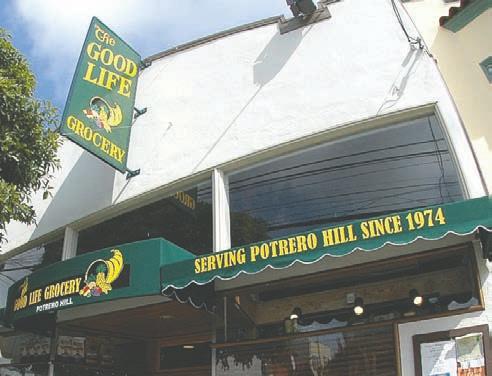






Last February, Recology, the private company that provides the City with garbage services, applied for a rate increase from the San Francisco Department of Public Works. Recology’s San Francisco operations consist of collectors Recology Golden Gate and Recology Sunset Scavenger, and refuse processer Recology San Francisco. The City has the authority to determine the residential – but not commercial –rates charged by Recology, which last requested, and obtained, a 22 percent rate hike in 2013.
The 2017 proposal, if approved, will raise residential collection rates through 2020, with a 16.4 percent jump in the first year, beginning July 1, 2017; 4.98 percent hike in the second year; no change in the third year; and a 0.62 percent rise in the fourth year. The new rates would generate roughly an additional $220 million in revenue for Recology over the four-years. Recology’s San Francisco collection subsidiaries currently generate $264 million in annual revenue, earning roughly a 9.5 percent profit.
According to Recology, a typical San Francisco household presently pays $35.18 a month for weekly collection of three 32-gallon bins: trash, recy-

cling, and compost. In 2020, that same household would pay $42.95 monthly for the service. By comparison, a single-family residence in San Jose spends $36.83 per month for weekly collection of garbage, recycling, and yard trimmings from bins of the same size; equivalent service in Oakland costs $40.60.
Over the past several months, DPW director Mohammed Nuru has held seven public hearings at City Hall, with testimony by Recology representa -
A long stretch of underutilized land on San Francisco’s southeastern Bayfront is slated for massive mixeduse development in the coming years. With a shortage of affordable housing, and a lust for economic growth, the City earmarked the Southside neighborhoods, including the Bayfront, for increased residential development when it adopted the Eastern Neighborhoods Plan in 2008. Today, an area that stretches from Mission Rock to Candlestick Point will ultimately see an influx of 20,000 households, 35,000 jobs and more than 520 acres of renovated open space as part of several projects in various planning stages, including the San Francisco Giant’s Mission Rock, Golden State Warriors’ Arena, and Forest City’s Pier 70.
Potrero Hill and Dogpatch residents are concerned that theses histori-
cally industrial areas aren’t equipped with the necessary infrastructure and amenities – recreational fields, child care facilities, schools and public transit – to support the ballooning population. With traffic congestion already a chronic complaint, community members wonder whether the thousands of new residents drawn by already built complexes – such as Azure, Potrero 1010, and Potrero Launch – have maxed-out roads and transit routes.
According to a March press release from the Bay Area Council, a public policy advocacy group, 40 percent of the region’s inhabitants – 46 percent of those between the ages of 18 and 39 –are considering moving because of the lack of affordable housing and worsening traffic conditions. The Council’s poll found that 70 percent of Bay Area
tives, cross-examination by municipal officials, and public comment. Public Works also hired an independent “ratepayer advocate,” RDJ Enterprises, which is supposed to educate, engage, and represent San Franciscans during the public process. Residents can call or email RDJ to obtain an explanation of the proposed rate changes or voice their concerns.
In its rate increase application, the company noted that its largest expense is labor; workers’ salaries and benefits
account for 65 percent of total costs. In 2018, that amount is “projected to increase by 9.5 percent based on the collective bargaining agreement recently negotiated with Teamsters Local 350.”
Primarily, however, the application focuses on funding infrastructure upgrades that’ll help the City achieve its waste reduction targets. One of these improvements has already been completed: the new $11.3-million sort-line at Recycle Central at Pier 96, which has increased the system’s capacity by 14.5 percent and enabled “the recovery of additional material not previously diverted, such as aseptic containers, gable-topped cartons, bagged textiles, bagged film plastic, small pieces of metal, and unpainted wood.” Recology has covered $9.2 million of enhancement costs; the company proposes to pay off the remaining balance using incentive funds that were set aside during the 2013 rate increase application process to spur the company to meet San Francisco’s environmental goals.
A new composting facility, intended to replace the Organics Annex that opened in 2007 on Tunnel Avenue, is being planned. According to Recology vice president Mark Arsenault, the
GARBAGE continues on page 20
Voters in Dogpatch and Potrero Hill’s Northwest blocks elected four new members, and re-elected three incumbents, to the Green Benefit District (GBD) board last month.
The first of its kind in California, GBD it is modeled on Commercial Benefit Districts, a popular undertaking in San Francisco in which business owners in a commercial corridor agree to an additional tax in exchange for having a say in how the money is spent. The District launched two years ago.
Elected to the 15-member board for the first time are Alex Goretsky, Kate Eppler, Nicky Jacobson and Kristel Craven. Jesse Herzog, Kat Sawyer and Alison Sullivan return as incumbents. All will serve three-year terms except Eppler, who will be up for election next year, and Jacobson, who will serve two years.
To fund the GBD, residential property owners in Dogpatch and Northwest Potrero Hill are assessed $0.0951 per square foot of building area; industrial property owners are charged $0.0475; greenspace, $0.0238. Owners of parking and vacant lots pay the residential rate. As of February, the GBD had balanced a budget of $603,100, of which $544,600 was collected or anticipated from taxes; the remainder raised from donations.
According to Executive Director Julie Christenson, much of the District’s first year was spent on organizational tasks. The board initially expected to spend a majority its additional efforts identifying possible expenditures on small maintenance projects. Continuing rapid growth in the area changed that approach.
“We have spent more time than
“I haven’t spoken to her in twentytwo years, and I don’t intend to start now,” my Mother proclaimed, scrubbing at the already clean counter to emphasize her point.
“But Mom, it’s a silent retreat. You won’t be talking to her. In fact, you’ll be encouraged not to,” I said to the back of her head, noting that her hair was still mostly black, with only a few specks of grey.
“Yes, well, as long as she doesn’t try to talk to me. I’m not having any of that.”
I’d made the mistake of telling my Mother about a retreat I was going on with Aunt Gen. Knowing of my budding interest in Buddhism, Gen had found a course for me to take at Spirit Rock, a local meditation center. She offered to pay the fee, and, after we talked about it, asked if she could come along. I was delighted to spend time with my Aunt, who’d taken up Spanish at 60; tap dance lessons at 65.
When I told my Mother about the trip she insisted on joining. Not because of any interest in Buddhism, but to make sure her older sister didn’t spend any more time with me then she did. Still, she wanted to make it clear that while she was going to the retreat, she wouldn’t be speaking to my Aunt.
“Mom, why don’t you talk to Gen?”
“Because of what she did to me.” She turned to face me, her lips clamped shut.
I’d asked her this question several times over the years, and knew I wasn’t getting any more information. Once, after I badgered her steadily for a week, Mom told me her grudge had something to do with borrowed money. Gen said that her husband, Sam, who passed not long after my Father several years ago, had lent my Dad a few hundred dollars, which he’d never repaid. Gen claimed it was no big deal, and didn’t know why my Mother still made a fuss about it. But I knew Sam, a gruff, self-made man with a long memory. If money was involved, Sam wouldn’t have let my Father or Mother forget it.
Since I’d initially agreed to go with Gen I decided to drive with her. My mother said that was fine, but of course she wouldn’t think of being in the same vehicle as her sister.
As Gen and I slid into Spirit Rock’s parking lot Mom slowly rolled in beside us, the gravel grumbling loudly beneath her tires.
“Hello, Sarah,” Gen called out, as we got out of our respective cars.
“Hmmmm,” my Mother nodded, glaring at me.
The meditation center was cool and cozy. A few dozen students were already there, shoes off, sitting silently. Gen and I picked out some pillows and found a place to sit. My Mother did the same, choosing a spot as far away from us as she could, while still maintaining a clear line of sight.
The teacher jiggled a small bell, and instructed us on the day’s activities: silent sitting, silent walking, silent eating. I looked across the hall at my Mother, who was silently frowning.
The morning passed quickly. In my meditative trace, I lost track of my Aunt and Mother, and sometimes, for a few short moments, even myself.
I was surprised when, at lunch, my Mom placed herself at the same table, directly across from Gen. Each of them chewed fiercely at their food, their eyes shooting needles across the table. Then, Gen stuck out her tongue at her sister.
“Oh, oh,” I thought, “Here we go.”
I silently prayed that whatever happened wouldn’t be too loud. My Mother straightened herself in her seat, and carefully placed her fork next to her plate. Using both her hands she pulled her mouth up and down, and pointed her eyes sideways while wiggling her ears.
Gen burst out laughing. My Mother giggled. Both of them continued eating, flashing shy smiles the rest of the meal.
Later, during walking meditation, I saw them slowly and silently stepping, arm-in-arm. From a distance, they

District 10 in Play
Last month, Shamann Walton, a City native and San Francisco Board of Education president, announced his candidacy for District 10 Supervisor in the November 2018 election. “I’ve spent my entire career fighting to improve our southeastern neighborhoods, and I’m running for District 10 Supervisor to make sure City Hall addresses the issues we’re facing and works for all of us,” Walton said. Walton runs Young Community Developers (YCD), a Bayview-Hunters Point-based nonprofit that focuses on job training, career placement, affordable housing development and anti-displacement services. Prior to YCD, Walton served as director of the Potrero Hill Family Resource Center
PDR Space Approved
A five-story building dedicated to small-scale builders and makers on 1228 25th Street, an awkward lot at the intersection of 25th Street and the Indiana Street on-ramp to Interstate-280 that currently serves as a scrap and storage yard, has been approved. The Leavitt Architecture-designed structure, which’d feature 11,500 square feet of flexible Production, Distribution and Repair space for small enterprises,

Editor,

including a 1,500-square-foot rooftop space and 450-square-foot lobby –along with 2,500 square feet of ground floor retail that could be outfitted as a café, and parking for ten bikes – could break ground as soon as a building permit is secured, the paperwork for which has been filed. Plans for four live/work lofts on the site were proposed and permitted seventeen years ago but subsequently abandoned.
Hill Resident Shot
Cleveland Reid, a 29-year old Potrero Annex complex resident, was shot to death last month near his home. No arrests have been made.

In response to “City Budget May Face Cliff,” in the March View, it’s unfortunate that future generations, unable to vote today, will bear the costs of many enacted pension programs, entitlements and boondoggle projects, requiring them to pay higher taxes and work later into their lives to pay for these promises. It’s the inmates running the pension asylum that’ve negotiated extraordinary pension and retirement benefits, without considering the unfair financial burden placed on future generations.
Ronald Stein Irvine, California
I’m not a conspiracy theorist, nor do I know what that term means. But I’ve become increasingly aware that letters to the editor in liberal, East Coast newspapers are predominantly anti-President Donald Trump. To that, I say: sad, horrible, unfair. I also ask two key questions: Are the liberal, East Coast newspapers not receiving letters to the editor in support of Trump? Or are they receiving them and not printing them?
Well, I happen to know that they’re, in fact, receiving them and not printing them. Again, I say: sad, horrible, unfair. To rectify that situation and to give these faithful supporters their moment in the journalistic sun, I’ve compiled dozens of unprinted pro-Trump letters to the editor in a new book, entitled: Sad. Horrible. Unfair. Below are four examples.
Editor,
Regarding “Da, Trump Is Putin’s
Lap Dognik” (editorial, February 14), you stated unequivocally that the 45th president has only praise for the Russian leader because the latter has “dirt” on the former. And what facts are used to back up this assertion? Oh, right. President Trump sent a box of See’s Candies Milk California Brittle® to Vladimir Putin for Valentine’s Day. My God, you make it sound like the leader of the free world has never engaged with a tyrant before to engender a better relationship.
Newsflash: the history books are littered with examples. In 1938, President Franklin D. Roosevelt secretly met with Italian Prime Minister Benito Mussolini at Coney Island, where they wolfed down Nathan’s Famous hot dogs, played arcade games, and gave each other hickeys in the Tunnel of Love. And in 1951, President Harry S. Truman invited North Korean Prime Minister Kim Il-sung to the White House for a sleepover. The two spent
The Dogpatch Historic District was officially designated by the San Francisco Planning Department in 2003, becoming the City’s eleventh such quarter. Roughly located between Indiana and Third; 18th and Tubbs streets, it consists of residential, industrial and commercial buildings, the oldest of which was built in 1870.
Historic districts impose stringent design guidelines for new developments, and restrict the modifications property owners can make to buildings that have been deemed historic resources. However, not all properties within a historic district are considered historic resources, and thus protected. Buildings can be “contributing” – possess historical significance and architectural attributes that are integral to the district’s historicity – or “noncontributing” – modern, or inconsistent with the district’s historic resources criteria. Property values typically rise more rapidly in historic districts than elsewhere.
Several Dogpatch Neighborhood Association members are identifying non-contributing buildings that may be worth preserving as historical resources. For these structures, future developers are presently free to determine whether or not to preserve their overall footprint and other aspects that are reminiscent of the community’s past.
“There are a number of buildings
we consider to be essential to Dogpatch,” said Bruce Huie, DNA president. “The intent is to recognize that they contribute to the distinct character of the neighborhood. The list is of properties with historic value compiled by neighbors. They’re not officially designated as historic resources, but were suggested as examples of properties that have historic value that neighbors want to see preserved in the context of ongoing development.”
With a torrent of development washing over the neighborhood, Huie hopes that existing buildings will be reused to preserve the structures’ footprint and historical character. The initiative is in its inception; it hasn’t been decided whether a historic preservation consultant will be engaged to study the edifices and pursue official historical resource designation, a costly process.
Huie cited the Minnesota Street Project as an example of good historic preservation that maintained the original structural footprint. The Project was founded by Andy and Deborah Rappaport; designed by Jensen Architects. The property consists of three warehouses that provide affordable space for artists and nonprofit organizations. Though voluntarily preserved by their owners, both 1275 Minnesota and another Minnesota Street Project edifice, 1240 Minnesota Street, are on the DNA’s list of structures that lack official designation as historical resources. Others include the old Potrero

Police Station on Third Street, two American Industrial Center buildings, and the Dogpatch Saloon, 2496 Third Street.
DNA member, Charles Smith, added the brick building housing the Potrero Square Lofts, 701 Minnesota Street, to the list. The structure was built in 1906 as a warehouse for bottling and storage of liquor and wine, and converted into a loft building in 1993 by the Minnesota Development Company and Pyatok Architects. According to Smith, Pyatok Architects won a Golden Nugget Grand Award at the 1994 Pacific Coast Builders Conference for their rehabilitation work.
DNA member, Katherine Doumani, believes historic preservation is important, but that determining what protections to give to which buildings can be a confusing and slippery process. She advocated for greater understanding and recognition of historic buildings and the value that historic designation offers.
“Just because a building is old doesn’t mean that it doesn’t tell a story,” said Doumani. “Once it’s gone, it’s gone. Not every building needs to be preserved, but if you remake an entire place and you lose all traces of what was there, then you lose a sense of place. That unique sense of place is what makes Dogpatch so popular and so coveted by those who want to develop it. It’s a ‘catch 22’, which makes it even more vulnerable.”
According to Topher Delaney,
artist at Delaney + Chin, based at 600 Illinois Street, it’s important that DNA engage professionals to help guide criteria for determining what’s of historical value, recognizing that there’s a profound difference between protecting personal taste and safeguarding history.
“This is a restrictive movement to the enormous amount of development, and there are some really thoughtful people that want control,” Delaney commented. “So, it’s a question of whether it’s community control or personal control. We’re in the middle of an extremely complex shift, and no one is bad here, but there needs to be more coordination. I think it’s an issue where organizations become podiums for people’s personal points of view, and we need to be very careful about this. We need to honor these people who devote their time to being active in community organizations, but we also have to be wary of personal interests.”
Many Dogpatch Historic District buildings are residential. Dogpatch resident and San Jose State University professor of architecture and design, John Loomis, believes that the neighborhood’s wealth of industrial buildings was gerrymandered out of the District. “The Historic Resource Evaluations (HRE) for these industrial buildings are created by consultants for developers wanting to tear them down, and the consultants do their best
HISTORIC continues on page 15



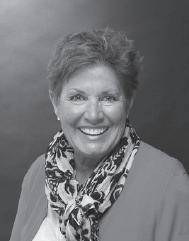
Last summer, Save the Hill and Grow Potrero Responsibly filed a lawsuit against the City and County of San Francisco challenging the environmental review process for a large mixed-use development located on 3.5 acres, 901 16th Street and 1200 17th Street. The project had been approved by the San Francisco Board of Supervisors in a nine to one vote, despite an appeal by neighbors concerned about its potential impacts.
Save the Hill and Grow Potrero Responsibly, community advocacy groups that focus on land use and development issues, will be represented at a Superior Court of California hearing on May 12 by attorney Rachel Mansfield-Howlett, Provencher & Flatt, LLP. Judge Cynthia Ming-mei Lee presides over the case.
“We have a broad-based support in the Potrero community, and we are hopeful that the court will agree with our argument: that the EIR failed to adequately review the project’s impacts and the City failed to require sufficient mitigation or adoption of a feasible alternative that would reduce the project’s admittedly significant impacts,” Mansfield-Howlett commented.
The project’s developers, Prado Group Inc. and Walden Development, LLC, want to construct 395 residential units and 25,000 square feet of retail on the property, which is southwest of the Interstate-280 and 16th Street junction, east of Jackson Playground. Fourteen three-bedrooms units would be created; 42 of the residential units would be affordable. Existing warehouse and office buildings would be demolished.
Community benefits associated with the project include a $1.8 million investment in Jackson Park, and a $9 million municipal contribution to affordable housing, likely to be built elsewhere in the City, in addition to the development’s 42 below-market units.
“As someone who has lived in Potrero Hill since 1967, this is the most family-friendly housing development that I’ve seen over the last 30 years,” said Art Agnos, former Mayor and Connecticut Street resident. “It has the largest number of two and threebedroom units than any project that has been proposed in that duration
of time. The two-bedroom units for example, have two full baths rather than one, in order to be family-friendly; most projects offer two bedrooms and one bath. There are also flex units for artists to live and work.”
“There’s a gated family-friendly recreation area where children who live in this development can play in a safe environment,” Agnos added.
In their Opening Brief, Save the Hill and Grow Potrero Responsibly argued that the project would alter the nature of the Hill and surrounding areas by straining public transit and worsening traffic congestion, among other adverse outcomes. The heart of their claim is an assertion that by relying on the 2008 Eastern Neighborhoods Plan EIR, which they stated is outdated, the development’s environmental review is inadequate. The groups also believe that the loss of Production, Distribution and Repair space through demolition of the existing buildings would be detrimental to the community.
“Citizens and numerous concerned area residents commented on the adequacy of the Draft EIR during the established comment period, including objections to: the proper reliance on an outdated Plan EIR and the Project EIR’s failure to adequately review and analyze: traffic and circulation, transit and transportation, aesthetics and views, heights, shadows, loss of PDR, recreation and open space, land use, cultural and historic resources, consistency with area plans and policies, and cumulative impacts; as well as the consideration of feasible mitigation measures and alternatives,” the Brief stated.
According to City Attorney Dennis Herrera and his deputies the lawsuit isn’t so much concerned with the project, but the policies embodied in the Eastern Neighborhoods Plan, and that the appropriate time period to challenge the Plan has long passed.
The City Attorney’s brief stated that the development is consistent with Planning Code density, uses, height, open space and policies and standards.
Agnos said the lawsuit’s impetus isn’t about inadequacy of the environmental review process, but preserving the views of certain neighbors in the vicinity. He thought that these kinds of lawsuits lengthen the time between approval and groundbreaking, effectively

driving up cost for developers.
“This is a couple of neighbors who are worried about losing their view and are trying to block a project that will benefit funding for Jackson Park and provide family friendly housing,” Agnos remarked. “This project is more family-friendly than others in Potrero Hill, so if we’re concerned about housing for families then this is exactly what we need for Potrero Hill.”
Laura Foote Clark, executive director of YIMBY Action, a nonprofit organization working to reduce Bay Area housing costs, believes the project is an important example of infill development that reduces vehicle emissions and suburban sprawl, and that fore -
stalling it and similar developments is what leads to regional environmental degradation.
“Those 400 potential residents of the project already exist, and not building housing in a dense place means encouraging more suburban sprawl, which isn’t something taken into consideration by CEQA,” she said. “You either have infill development in existing cities or you have suburban sprawl, that’s your choice.”
In July, 2016, The Potrero View reported that Washington-based pet care startup, Wagly, planned to launch a “comprehensive” animal boarding facility, grooming service, and veterinary clinic in Potrero Hill.
The business was expected to open later that summer at 1400 17th Street. By autumn, anticipated renovations at the gutted building, previously occupied by California Caster, hadn’t materialized. Late last year, Wagly terminated its lease on the space, confirming rumors that the company had changed course and decided not to open in San Francisco, at least for the time being.
The only official notice Wagly made about its departure from the Hill occurred when mention of it disappeared from the company’s website. The reason for the withdrawal remains unclear. Contacted by the View, Wagly chief executive officer Craig Susen stated that, “Wagly has no comment.”
Last year, before the opening of its flagship location in Bellevue, Washington, Wagly announced that its expansion goals included seven “pet campuses” in California and one in Arizona; an eventual nationwide rollout was suggested. More recently, Wagly appears to have scaled back its immediate ambitions, although a new
San Jose facility launched in February, following two Southern California openings. The company owns three dog daycare centers in the Bay Area, which Wagly purchased in 2015: two Fog City Dogs locations in San Francisco and Smilin Dogs in San Carlos.
Last fall, former Chief Technology Officer Craig Susen replaced Wagly co-founder Shane Kelly as CEO. Chief Commercial Officer Angela Owen left the company at around the same time.
Speaking on condition of anonymity, two local pet-related business owners hypothesized that permit complications or zoning problems may have played a part in Wagly’s retreat. However, public records – including three 2016 building permit applications, two of which were issued, with the third put on hold, despite an approved “change of use” to “animal services,” on account of “street improvement” requirements and “minor sidewalk encroachment” issues – don’t support this theory.
There also was speculation that Wagly’s “big-box” approach to pet care might have turned out to be a poor prospective fit for Hill residents, who tend to value one-on-one interactions with their dog walkers, groomers, and veterinarians.
“They didn’t reach out to me at all,” said one nearby business owner. “I don’t
WAGLY continues on page 17
Fourteen years after the University of California, San Francisco built its high-technology research campus on an abandoned Southern Pacific railyard in Mission Bay, much of the surrounding area still feels pretty sterile, lacking a sense of organic human habitation that comes with a diversified, multiuse, street life of restaurants and shops. That’s one reason why the weekly Mission Bay Farmers’ Market at UCSF, which has gradually grown in size, scope, and popularity since it opened in 2009, registers as an important injection of life and color when it sets up on Wednesdays between Third and Fourth streets on the Gene Friend Way pedestrian plaza.
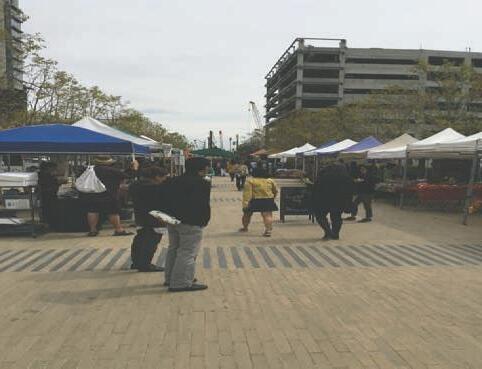
San Francisco hosts 24 regular farmers’ markets, none of them in Dogpatch or Potrero Hill. For Southside neighborhoods Mission Bay’s yearround market is the only game in town. It opens at 10 a.m. closes at 2 p.m., rain or shine, and offers all of the farmers’ market staples: fresh produce, primarily, along with flowers, fish, bread, and
on Saturdays, this facility accepts donations of books, compact discs, LPs, and other materials that stock not-forprofit bookstores at the Fort Mason Center and the SFPL’s main branch, the revenues from which support the public library. The Friends’ website doesn’t note that the 17th Street Book Donation Center contains a tiny street-facing bookstore of its own; a small garage door opens onto a closetlike alcove of shelves. The unalphabetized collection of fiction and nonfiction struck me as entirely random. There was even a set of instructional martial arts video home system tapes mixed in among the used books. But the chaos is manageable and even pleasant, given how quickly and easily one can browse the nook’s assortment in its entirety.

I love secondhand bookstores because the goods are cheap enough to allow browsers to take a risk on an unknown title. Here, paperbacks cost two dollars; hardcovers three. Choices are purchased inside, at the donation floor around the corner. I bought a book called Le Corbusier in Perspective, an anthology of architectural essays that extend way beyond my limited grasp of the subject matter. There was something so civilized, I thought, about casually picking up an incomprehensible volume of architectural criticism at a miniature parkside bookstand, like a Parisian strolling by the literary vendor carts along the Seine.
His Wattis show leads visitors past pieces that look like art – a jagged black-and-white photomontage, composed largely of infamous subjects of sexual scandal, alongside personal grooming products, like toothbrushes and razors; canvases decorated by rows of sloppily glued metal screws – and alongside items that resemble art world debris, objects that were supposed to be cleaned up and stored backstage before opening, or were never meant to leave the studio, like boxes of unfolded promotional Tshirts, an unplugged clothes iron, and a half-built wooden shed containing what could, from a distance, be a child’s incomplete science fair project. The experience is mildly upsetting, funny, and invigorating all at once.
CCA graduate students have transformed the Wattis’s secondary gallery into a communal gathering space for a project called Black Light that, in a series of events this spring, has spotlighted authors, historians,

I’d never bothered until the other day to enter the flowery fenced enclosure on the Potrero side, just above the benches themselves. It’s a lovely, welltended, plot; it even contains a Little Free Library where passersby can take a book – in case you didn’t find anything of interest on 17th Street – or leave one behind.

activists, and artists who have examined “the relationship between cultural institutions and black artists.” The final lecture in the series, which also contains a darkly expressionistic largescale painting by Rodney McMillan, features the Afrofuturist Rasheeda Phillips on May 6 at 6 p.m.
The first drawer of the metal cabinet that constitutes the “library” holds books; the second contains homemade music cassettes, the third has magazines.
Garden volunteers meet once a month, every first Sunday at 9 a.m.; all are welcome.
a selection of hot prepared foods dished out from tents from which snake long lines of University of California, San Francisco employees at lunch hour. One of the things I especially like is that it has several stands that sell only one thing each, like eggs, strawberries, or asparagus. Is there any better way for an artisanal grower to establish complete dominion over a single ingredient than to sell nothing but that item?
My next major destination, after I left the farmers’ market, was in the Hill. On the way, however, I stopped at the Friends of the San Francisco Public Library Book Donation Center, 1630 17th Street, across from Jackson Playground. From 10 a.m. to 4 p.m. on weekdays, and 10 a.m. to 2 p.m.
From there, I proceeded to the nearby Wattis Institute for Contemporary Arts, 360 Kansas Street, operated by the California College of the Arts. Entrance to the Wattis – an impressive modern space designed by Mark Jensen, the architect responsible for the rooftop garden at the San Francisco Museum of Modern Art – is free, as is admission to the lectures, performances, and workshops frequently held there. Hours are Tuesday to Saturday, noon to 7 p.m.
The main exhibition, currently, is Henrik Olesen’s The Walk, a challenging installation of new and existing work by a Berlin-based Danish artist whose modus operandi involves upsetting the tidy and precise arrangements of today’s austerely hygienic galleries.
Four blocks from the Wattis is the Benches Garden, 18th Street and San Bruno Avenue. In early 2010, the Benches Garden transformed the blank area beside the pedestrian overpass at 18th into a botanical oasis, becoming one of several small, communitytended, green spaces that perform the vital service of softening the Hill’s eastern and western borders, bounded by noisy superhighways on two sides. Although I’ve always admired the landscaping on both ends of the overpass,

On the opposite end of the neighborhood, in Dogpatch, a new restaurant, Glena’s Tacos and Margaritas, opened at 632 20th Street, former site of local favorite, The New Spot, which closed last year when chef and co-owner Gilberth Cab was denied an opportunity to renew his lease. Justly embittered The New Spot devotees may have a hard time finding a place in their hearts for Glena’s, but I gave the newcomer a shot. The interior has been redesigned, with a simultaneously sleek and weathered aesthetic, and a hint of tropical flavor. The spare menu offers a short selection of simple, tasty tacos – al pastor, carne asada , pescado, and tofu – at five dollars each. Tacolicious, rather than Taqueria Vallarta, prices. Glena’s is a poco more traditional than the former, obviously less than the latter. In addition to tacos, my wife and I ordered the fried chicken torta, the
In March, a new website, Dogpatch Solutions Tracker, launched at https:// dogpatch.dillilabs.com. A community service aiming to improve neighborhood safety and cleanliness, the site features a digital map application where registered users can pinpoint such concerns as potholes, graffiti, trash, and vandalism in Dogpatch and Potrero Hill.
Reporting a problem, however, is only the first step. Dogpatch Solutions Tracker also allows users to browse existing complaints and “adopt” a problem identified by a neighbor. The adoptee then takes responsibility for ensuring that the issue is resolved, by alerting and staying on top of appropriate City authorities, or fixing it themselves.
The application’s creator, South Bay resident Piyush Hari, was inspired by a thread on the private, localized social network Nextdoor, in which Dogpatch residents complained about potholes expanding with each winter rain. “It went on and on every single day, that thread where people would be offering suggestions on what to do in order to fix the potholes,” said Hari.
Several commenters pointed to a municipal app, SF311. Hari noticed that while it was simple to report a problem to the City on SF311, there was no easy way to track all of the
issues identified in a neighborhood. Hari envisioned an application that’d incite community engagement; instead of relying solely on the City to clean up the community, residents could evaluate the infrastructure issues around them and participate more actively in addressing them.
Some issues – like the potholes –ultimately require City intervention. But Hari hopes that Dogpatch Solutions Tracker may help inspire residents to sweep up broken glass, pick-up litter, and find other imaginative, independent, ways to make Dogpatch a more beautiful and functional place.
Hari, a software engineer, was born in Delhi, India. He came to the United States in 2004 to earn a Master of Science degree at the Massachusetts Institute of Technology. He moved to the South Bay to work for the multinational computer technology company, Oracle, in Redwood Shores, but quit in 2015 to “let my creative mind do what I’m doing right now”: creating bespoke software for clients as a freelancer while making time to execute his own ideas. In 2016, he incorporated his small business, Dilli Labs LLC, and rented office space on 20th Street, between Third and Illinois.
“Since then, I have really enjoyed this neighborhood,” he said. “Being in the City, with more things happening around you, you get to see more opportunities where tech can be deployed to
better some of the pain points.”
Right now, Dogpatch Solutions Tracker exists only as a web application, with a handful of active users.
If it gets more support Hari said he’ll program specific mobile versions for the iPhone and Android, though it’ll remain a “not-for-profit gig.” The website is currently usable in Safari and Chrome.
Another planned improvement involves creating material incentives for users to report and adopt problems.
“I want to pull in local businesses,” Hari said. He imagines that if the app becomes more popular restaurants and shops in Dogpatch may be willing to participate by offering coupons or discounts for good Samaritans.
Whatever growth may occur, Hari doesn’t favor the idea of expanding the application’s range beyond the Dogpatch-Potrero Hill area. “When you’re talking with your wife at home, the discussions you’re having are a lot different than the discussions you’re having with your neighbors, which are a lot different than the discussions you’re having with strangers,” he observed. “Charity starts at home. I feel a sense of ownership here, given that my office space is here, and I spend a lot of my time at my office space, and I want other people to feel that sense of ownership.”
vegetales en escabeche, and an agua de Jamaica. We found all of them pleasing and flavorful. However, I was disoriented by the question of how to tip in a fast-casual restaurant environment, in which customers order at the counter, fill up their own water glasses, and retrieve their own silverware from a tabletop bucket, but receive their food from servers at the table, without having to get up for it. At Glena’s, unless you sit at the bar, you pay for your food up front and then immediately select your tip on the computer screen: the percentages suggested by the Square interface were 18, 20, and 25, which, to me, came across as somewhat aspirational at an eatery that doesn’t offer traditional table service.
On the other hand, the staff was helpful, the food came quickly. The ambiguous stick in my craw may have derived from the premature position of the tipping mechanism. All diners may agree that a 25 percent tip can emerge only as a consequence of wonderful service; the concept of a 25 percent tip before the meal, when you have no idea whether the service’ll be good or bad, is frankly ludicrous. I spent the rest of the evening trying to establish a justification for a universal tipping standard at fast-casual restaurants – like the 20-percent postprandial standard for table service – a stimulating process that ultimately made my dining experience – if not the eating itself – more enjoyable.

One may be surprised to find out that the winter can be disheartening in San Francisco. Though not nearly as cold as other places, we are not always prepared with big warm coats for the winds. There can also be a lot of rain. Out by the sea there is more fog, more cold, and more wind. It is fun to go there during the winter anyway.
Downtown or in the east side of town it may be sunny or rainy, but one does not know what it will be like in the west side of the city by the seashore unless they go there. One may leave the sunshine to find rain by the shore or one may leave the rain to find a break in the clouds by the sea.
One is likely not to find as many people at Ocean Beach in either case.
On the dry days, there is a great deal of wind and a fair bit of wind chill for those who want to take a cold
brisk walk by the shore. Blasted off the surface of the water and waves is sea foam that breaks into pieces and flies west with the wind over the sand. If the sky is clear the water will match the bright blue colors of the sky and sparkle. One can see the disk of the sun break through the mist near the sea surface on its way to set. If there are some clouds the sea may be the color of slate blue or gray.
Birds can be seen on these days staring into the wind from the west. They may have difficulty flying through the windy skies. The cold winds will chill the unprepared. Some days one can escape the cloudy city by the shore.
This an excerpt from Ocean Beach Diary, available on Amazon. Ryder W. Miller edited From Narnia to a Space Odyssey and cowrote San Francisco: A Natural History
Annual
Contact us at: 415.643.9578 editor @ potreroview.net advertising @ potreroview.net

At our April 13th Community Building Group meeting, we presented the scope and timeline for Phase 2, which will follow the completion of Block X.
The meeting provided an opportunity for community members to receive an update on plans for this next phase and to ask questions, while at the same time satisfying a requirement precedent to our Phase Application submission to the SF Planning Department. Phase 2 represents a jump in scale for the rebuilding effort. The scope of work includes two buildings on two newly created parcels. One of the parcels, Block B, will be dedicated for affordable housing (public housing replacement units and affordable tax credit units). The other parcel, Block A, will be sold for the development of market-rate units. Proceeds from the sale of the market-rate parcel will help to subsidize the creation of new affordable units and extensive infrastructure work. Selling market-rate parcels is an essential component to financing the overall rebuilding effort. Finally, BRIDGE plans to include a child care facility within Block B, with slots for children of current public housing residents, new residents of affordable housing, and the new market-rate households, along with the broader Potrero Hill community as space is available. Our planning work is just beginning. As each element starts to take shape, BRIDGE Housing and/or the selected market-rate developer will return to a community meeting to receive input on the building and open space design. We’re very much looking forward to working with the community on the development of our next phase!
website: rebuildpotrero.com, e-mail potrero@bridgehousing.com


On January 25, U.S. President Donald Trump signed Executive Order 13768, which promised to withdraw federal grants from “sanctuary cities.” Although the term “sanctuary city” has no legal definition, it’s generally understood to refer to municipalities that permit residence by undocumented immigrants, with policies that prohibit local authorities from detaining individuals due to their immigration status, and from holding jailed immigrants past their release dates at the request of U.S. Immigration and Customs Enforcement if no criminal warrant demands it.
Nearly every major American city has a sanctuary policy. San Francisco has self-identified as one since 1989, based on the principle that the community fabric is strengthened when all residents feel entitled to report crimes, enroll their children in schools, and use public services without fear of deportation.
The late Reverend Peter J. Sammon, of St. Teresa’s Church, was an early advocate for the sanctuary movement. In 1984, St. Teresa’s became the City’s first parish to declare itself a sanctuary. Five years later, Sammon collaborated with the San Francisco Board of Supervisors to pass the City of Refuge ordinance, making San Francisco’s sanctuary status official. Early this year, another community member –City Attorney Dennis Herrera, who has lived in Dogpatch since 1993 – acted to
defend the same immigrant populations Sammon had worked to protect.
On January 31, 2017, Herrera filed a federal lawsuit against the Trump Administration, marking the beginning of what may be a prolonged battle between San Francisco and the White House. Standing beside Mayor Ed Lee, Herrera told reporters at a press conference that Trump’s executive order “is not only unconstitutional; it’s un-American.”
Herrera explained that the U.S. Constitution “gives local and state governments the power to make decisions in the best interests of our residents. President Trump’s executive order seeks to interfere with those powers.”
He added that San Francisco fully complies with the federal statute cited by Trump’s order – 8 U.S.C. 1373, which requires that local governments respond to federal inquiries “regarding the citizenship or immigration status, lawful or unlawful, of any individual” – but noted that this statute, too, violates the Constitution, and will be challenged by the lawsuit.
“No president can commandeer the local police force and turn it into the deportation arm of the federal government,” Herrera concluded.
Trump’s executive order was deemed doubly problematic –“potentially catastrophic,” in Herrera’s words – for cities like San Francisco because it didn’t state how much federal funding would be lost, or where the cuts would occur, if the order were carried out. The City’s annual budget is roughly $10 bil-
lion, of which $1.2 billion comes from the federal government. Mayor Lee is required to submit a new budget for the fiscal year beginning July 1, 2017 to the Board of Supervisors by June 1.
In the hope of removing the “cloud of uncertainty” hanging over the Mayor’s Office, in March Herrera asked a federal judge for an injunction that’d freeze Executive Order 13768 until the question of its constitutionality – posed by Herrera’s lawsuit and, later, by similar complaints from Santa Clara County, the City of Richmond, and the towns of Chelsea and Lawrence in Massachusetts – had been resolved.
“I would argue that the uncertainty itself is creating harm to the City and County of San Francisco,” Herrera stated in an interview with the View “There is certainly a necessity of some predictability when you’re trying to
budget appropriately.”
In mid-March, Herrera released a public statement with District Attorney George Gascón and Public Defender Jeff Adachi in support of California Supreme Court Chief Justice Tani Cantil-Sakauye, who had written to U.S. Attorney General Jeff Sessions and Department of Homeland Security Secretary John F. Kelly to request that ICE agents refrain from “stalking” undocumented immigrants at California courthouses. “Enforcement policies that drive victims away from the courthouses – whether they be victims of crime or unfair labor practices – undermine the administration of justice,” warned Herrera’s, Gascón’s, and Adachi’s collective statement. “If witnesses are afraid to come to court and testify
HERRERA continues on page 9
T he words “manufacturing” and “San Francisco” aren’t often used in the same sentence, unless a historian is talking about the City’s mid-century last heyday as an active port and shipyard. Yet there are upwards of 700 manufacturers in San Francisco, employing in the neighborhood of 10,000 people.
According to SFMade, a nonprofit dedicated to fostering a vibrant manu-
handful of firms employ as many as 250 people, most of the City’s manufacturers are small businesses, averaging eight employees. Many fit into what’s called the “Maker-Entrepreneurial” culture.
Of SFMade’s 640 members – including handmade jewelers, pet product producers, beauty supply makers and boutique guitar crafters – the average has been operating for a dozen years; half have been in business for less than six years.

“The biggest sector is things that are sewn,” said Lees. Those firms make up 36 percent of SFMade’s membership. Twenty percent are in food and beverages. Most of the rest are what Lees referred to as “hardware design companies;” firms that make a range of “lifestyle products,” such as furniture,
SFMADE continues on page 9
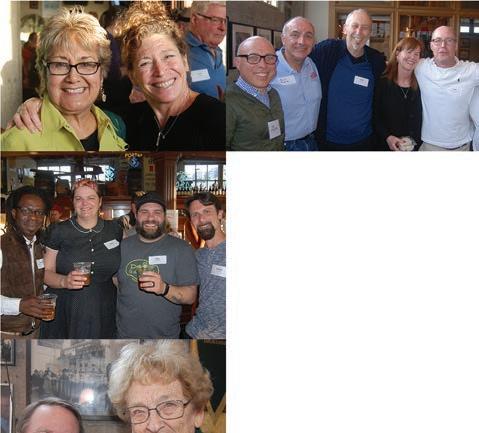


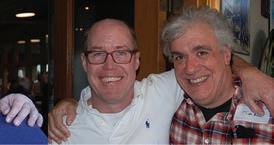
HERRERA from page 8
– for any side in a case – justice is not served and everyone loses.”
In late-March, Jeff Sessions pledged that the U.S. Department of Justice would no longer give grants to cities that flout 8 U.S.C. 1373. San Francisco currently receives $2 million annually from the Department. Herrera quickly filed a legal brief reiterating his claim that the City has never violated the aforementioned statute.
In a late-April statement issued after Judge William H. Orrick approved San Francisco’s motion for a preliminary injunction in the lawsuit against President Trump’s executive order, Herrera said, “Faced with the law, the Trump administration was forced to back down. This is why we have courts; to halt the overreach of a president and an attorney general who either don’t understand the Constitution or choose to ignore it.”
Herrera told the View that he’s “gotten involved in cases against the federal government previously” but that his defense of San Francisco’s sanctuary policies constitutes a “very, very unique case.” He admitted that he was “stunned” and “disappointed” when Trump won the presidential election, but wasted no time getting back to work.
“Considering what had been said on the campaign trail, with respect to a variety of issues, I was pretty confident that we would have to be prepared to act proactively once the President’s Administration took over,” he said, “and that’s why we were prepared as we were to take action out of the box. During that interim transition period, based on what had been said over the
campaign, we were looking at different areas where we thought we’d have to be concerned and subject matters to look at to make sure that San Francisco’s interests were protected: public safety; education; healthcare; environmental and then, obviously, immigration issues.”
In early March, Herrera – representing San Francisco alongside 30 other cities and states – filed an amicus brief with the U.S. Supreme Court in support of transgender students’ rights, including their right to use restrooms that correspond to their gender identities.
“I think that this office has always been at the forefront of fighting for civil rights and LGBT rights, and to the extent that those fundamental rights are going to be threatened, we’ll make sure that we take a proactive role,” he affirmed. “The case where we filed an amicus brief was one such case in one such area. The rhetoric that’s coming out of Washington suggests that fundamental rights could be threatened. We’re going to make sure to do what we can to make sure that civil rights are protected, and to the extent that they get into other areas which impact San Francisco and Californians more generally, we’ll be at the forefront of those as well.”
SFMADE from page 8
stationary, and the fastest-growing segment, consumer electronics.
Food and beverage is the largest job creator; clothing lines are the easiest to start. Lees explained that a designer can begin with just one product and

outsource to a sewing company.
Companies can join SFMade for free as long as they manufacture in San Francisco. The nonprofit has an annual budget of roughly $1.1 million, with almost one-dozen staff members, funded by donations and grants. It assists businesses in three core areas: providing strategic assistance related to identifying sources of capital and marketing; finding space and negotiating leases; and recruiting employees. A fulltime staff person is available to help with the latter, some of whom are cultivated through SFMade’s youth internship program.
“We are the only organization helping manufacturing to grow and stay in San Francisco,” Lees explained, helping members “be more profitable, sustainable and create jobs.”
Mark Dwight, owner of Rickshaw Bagworks, located on the corner of 22nd and Minnesota streets, founded SFMade, with assistance from entrenched businesses like McRoskey Mattresses, in existence since 1899, and Anchor Brewery, which traces its roots to 1871. “I conceived of SFMade when I was CEO of Timbuk2, back in 2003,” explained Dwight. The City, though a Community Development Block Grant, was initially the organization’s biggest


funder.
Dwight spent 20 years in the technology sector before starting Rickshaw in 2007, during which he learned the importance of branding, a concept he believed could apply to the “world renown brand that is San Francisco to promote our locally-made goods.” He designed SFMade’s logo, which appears on members’ websites and store windows.
“SFMade is a celebration of the renaissance of micro-manufacturing, and the increasing desire of consumers to know more about the who, what, why, how and where - the story - behind the products they buy,” he explained.
That ideology will be on display May 8 to 14 during “SFMade Week,” an annual event featuring the City’s manufacturing sector, with popup shops, factory tours, store sales and crafts classes.
According to Sarah Stanley, who with her mother, Bonnie Gemmell, runs Spicer on Third - making textile and cork handbags - one of the benefits of SFMade has been outreach events like SFMade Week. “They’ve alerted the Bay Area that there is in fact manufacturing in San Francisco, and customers
SFMADE continues on page 16




Getting a home ready for sale doesn’t have to be difficult or expensive. There are several simple ways you can add value inexpensively:
MAKE IT SHINE—There is nothing more important than ensuring your home is clean.
LIGHTEN AND BRIGHTEN—If it is time to repaint, consider lighter colors that will make your home brighter and feel more spacious.
OUT WITH THE OLD—It is easy to accumulate clutter even after just a few years. Donating or discarding unneeded items can make a home feel more spacious—and make your future move easier.
DON’T FORGET SMALL THINGS WITH BIG IMPACTS—Simple steps like painting the garage floor or planting bright flowers near your home’s entrance are easy and inexpensive ways to make a home more welcoming and tidy.
If you’d like a free report on the value of your home, call Tim Johnson at 415-710-9000.

Tim Johnson
415.710.9000
tim@timjohnsonSF.com
www.timjohnsonSF.com
Lic. #01476421
 BY MICHAEL IACUESSA
BY MICHAEL IACUESSA
L ove or hate the company, it’s a rare week when ride hailing megacontractor, Uber, isn’t in the news.
Potrero Hill resident and Fortune Magazine executive editor, Adam Lashinsky, has been covering Uber since its 2009 inception. His Wild Ride: Inside Uber’s Quest for World Domination, available May 23, will help feed the seemingly insatiable curiosity about the company.
“In my trails I have found pretty much that everybody is fascinated by Uber and they know way less than they like,” said Lashinsky, who lives near Daniel Webster Elementary School. Outside the technology world and journalists covering Uber, he believes
people don’t know much about the firms’ inner workings.
Previously published books about Uber have focused on critiques of the firm, or been generalized depictions of the shared economy. In contrast, Lashinsky had inside access to Uber’s controversial chief executive officer, Travis Kalanick, including accompanying him on a business trip to China last summer.
Kalanick was initially cold to the idea of cooperating, threatening Lashinsky in an email that he’d have another book written under his control to compete with it. Over time, with persistence, Lashinsky secured the combative Kalanick’s cooperation.
“I think I persuaded him by one, that I was going to do it anyway, and two, that I think it would be in his interest that he would have his say,” said the author. The Uber CEO does indeed get his say in the book. In the detailed prose of a veteran journalist, Lashinsky lays out Kalanick’s missteps and character flaws, as well as his successes.
The book follows the CEO’s career trajectory, taking readers into a world where it’s possible to raise $300,000 for a business that’s $200,000 in debt, with no customers, as Kalanick did with his second company, Red Swoosh. Or, after being indicted in South Korea for operating an illegal taxi service, to be more worried about negative publicity from a potential photo of his arrest than the charges themselves.
The 225-page book also explores
As you move into your forties and fifties, you are entering the Prime Time of your life — and these days that prime time lasts well into your sixties or seventies. It's the start of a whole new adventure!
New monthly workshops for Professional Women in Midlife are starting in San Francisco Check them out!
To learn more, and to register, please visit: www.atimeofmyown.com/workshop-series.html


Barbara Mark, Ph.D. | A Time of My Own 2339 3rd Street, Suite 45, San Francisco, CA 94107 ATimeofMyOwn.com | 415-608-2324
Leadership and Life Strategies for Professional Women

the trials and tribulations a largely inexperienced business has faced breaking new ground and dealing with rapid success. In one chapter, Lashinsky gets behind the wheel as an Uber driver, discovering the company’s training dealt as much with tips for cleaning vomit from his backseat as anything more formal.
L ashinsky, who lives with his wife and fourth grade daughter, was promoted to executive editor at Fortune in March after 15 years with the magazine. He previously worked at TheStreet.com and the San Jose Mercury News, and is a regular commentator on Fox News.
“I’m not a technologist,” he said. “I’m a finance and business writer.” The focus of his work with Fortune, and his book, has been covering business strategy and financial performance. Technology is an area of knowledge simply because of his proximity to Silicon Valley.
Wild Ride is his second book. Inside Apple: How America’s Most Admired--and Secretive--Company
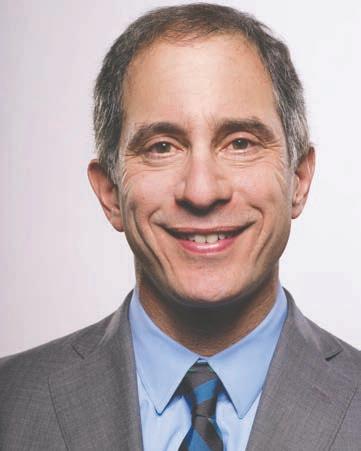
Really Works , came out in 2012. Lashinsky’s impetus for that volume was his belief that Apple was the most important company to emerge over a generation. In that vein, he felt Uber was a natural choice for his next work.
“Uber is the most fascinating business story in the world right now. Period.” he said.
ing with her?”
looked like two graceful birds dancing together.
At the end of the retreat, as Gen and I were putting away our pillows, my Mother walked past us without so much as a glance. “Wasn’t that a nice day, Sarah,” Gen called out.
“Hmmmmmmh,” my mother responded, without turning her head. She kept walking, out of the center, into the parking lot.
“Mom, Mom,” I called, running after her. “I thought you and Gen made up.”
“No.” She bit off the words. “I’m still not talking to her.”
“But what about lunch, and walk-
“That’s not talking to her,” she said. For a second I thought I saw the shadow of a sly smile skip across her lips. Then, she got into her car, and drove away.
To this day my Mother won’t talk to her sister. But every month, long after I’d lost interest in meditation, or Buddhism, my Aunt and Mother meet at Spirit Rock for a silent retreat. I know this only because Gen told me; my Mother has never mentioned it. And, for now at least, it seems best that I keep silent.
This work of fiction was previously published in Mandala.

Art: Kids draw Potrero; Jennifer Kesteloot and Norm Bartlett Sponsored by Prefund.org. 5 to 9 p.m. Farleys, 1315 18th Street.
Music: Bum Wagler & The Tune Wranglers
Bum Wagler & The Tune Wranglers play original tunes in the Honky Tonk country vein. 7:30 to 9 p.m. Farleys, 1315 18th Street.
5/5 and 5/6
Theater: The Inn at Derbyshire
The Moonrisers present the world premier of an original swashbuckling comedy, with mystery, intrigue, romance, and murder. Tickets $15 to $20. Phoenix Theater, 414 Mason Street. For tickets: http://tinyurl. com/mn2bnnn. Information: https:// themoonrisers.wordpress.com/
Music: The Batrays
The Batrays, a San Francisco surf rock band that pays tribute to classic surf rock bands, including The Blue Stingrays, The Ventures, The Surfaris, The Lively Ones will perform 7:30 to 9 p.m. Farleys, 1315 18th Street.
5/6 to 7/1
Art: Garage Inventors
This exhibition features a 30-year span of work by artists who exemplify Silicon Valley’s ethos in the form of the genius “garage” inventor. Many of the artists have deep roots in the Bay Area; all channel their “mad scientist” streak to experiment, discover, and innovate. Featured artists include a pioneer in the new media genre, Nam June Paik, a Korean-American artist widely credited as the founder of video art; Massachusetts Institute of Technology-educated engineer, Alan Rath, who builds electronic sculptures infused with uncannily lifelike characteristics; and MIT-educated artist, Jim Campbell, whose work probes the limits of perception with extremely low-resolution imagery embodied in hand-made, LED-based sculptures. Free. Hosfelt Gallery, 260 Utah Street. Information: http:// tinyurl.com/kbgaswa, michaela@ hosfeltgallery.com; 415.495.5454

Festival: How Weird Street Faire Come to the faire with a flower in your hair. The 18th annual How Weird Street Faire pays tribute to the Summer of Love’s 50th anniversary. There’ll be dancing in the streets, with 11 stages of electronic music, performances, food, unique vendors, art, inspiring creativity, and peace technology exhibits. The How Weird Street Faire celebrates acceptance, appreciates diversity, welcomes people of all ages, and is handicapped accessible. Noon to 8 p.m. $20 donation for a Magic Button. Howard and Second streets. Public transportation advised. The faire is a project of the nonprofit World Peace Through Technology Organization. Information: http://howweird.org.
5/7 through 5/14
Festival: SFMade Week
A celebration of local manufacturers, their products and people, SFMade Week is back for its sixth year. Featuring factory tours, demonstrations, shopping events, and Ramp it Up!, a benefit for SFMade on May 10, 5:30 to 8:30 p.m. Tickets: $45. Barebottle Brewing Company, 1525 Cortland Avenue. For benefit tickets: http://tinyurl.com/kteyf4c. For a calendar of SFMade events,

Saturday
Sunday
Tuesday
Friday

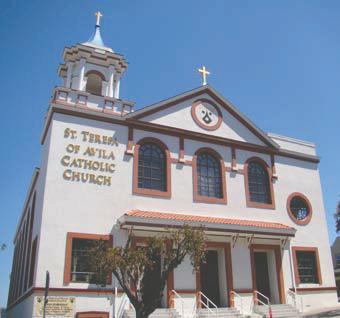
workshops, and more: http://tinyurl. com/ltcavae
Music: Bay Blueberries Bay Blueberries perform blusey indie pop-rock, 7:30 to 9 p.m. Farleys, 1315 18th Street.
Music: John Lewis, Gary Schoofs and Tim Hazen Covers of Beatles, Eagles, Everly Brothers, Simon & Garfunkel, Joni Mitchell and Crosby, Stills, Nash and Young, 7:30 to 9 p.m. Farleys, 1315 18th Street.
Music: Eli and the Approach
An acoustic band made up of Potrero Hill residents, featuring lead singer Eli Becker, Dave Gabine on percussion and Chris Martin on guitar. The Approach performs classic tunes from the 1970s and 1980s mixed with current hip hop and alternative songs. 7:30 to 9 p.m. Farleys, 1315 18th Street.
Art: Flowers & Books
Adults can make a flower bouquet; kids can illustrate their own picture book. It’s a win-win for Mother’s Day weekend! Free. 10 a.m. to 2 p.m. Reserve your space: http://tinyurl. com/ma453c7. Umpqua Bank, 415 De Haro Street. Information: emily@ dcenter.org.
5/13 through 6/11
Theater: SMUT: An Unseemly Story (The Greening of Mrs. Donalson) In The Greening of Mrs. Donaldson, a recently bereaved widow finds interesting ways to supplement her income by performing as a patient for medical students, and renting out her spare room. Quiet, middle-class, and middle-aged, Mrs. Donaldson discovers that she rather enjoys roleplay at the hospital, and the irregular and startling entertainment provided by her tenants. Tickets: $40 to $60. Previews, 5/10 to 5/12: $20. Z Below, 470 Florida Street. Information and to purchase tickets: 415.626.0453 or at www.zspace.org
The Exploratorium is a twenty-first-century learning laboratory, an eye-opening, alwayschanging, playful place to explore and tinker, featuring hundreds of science, art, and human perception exhibits. Pier 15, The Embarcadero and Green Street. Information: https://www. exploratorium.edu/
Community: Potrero Hill
Neighborhood House Board of Directors
Community Meeting
Contact Board secretary, Taylor Booker, with questions or concerns you want considered by the board by May 12, and to obtain additional information about the meeting time and place: 415.826.8080; trbooker001@gmail.com
Music: Soul Delights
Live music by Soul Delights. 7:30 to 9 p.m. Farleys, 1315 18th Street.
Dogpatch & Northwest Potrero
Hill Green Benefit District General Board Meeting. Working to green-up, clean-up and beautify public spaces in Dogpatch and NW Potrero Hill. Board of Directors meeting. Free. 6:30 to 8 p.m. Tivoli Room, University of California, San Francisco, 654 Minnesota Street. http://www.dnwphgbd.orgreenBenefit.org
5/19 – 20 and 5/23
Art: Recology Resident Artists Recology San Francisco’s Artist in Residence Program hosts an exhibition and reception for artistsin-residence Carrie Hott and Cybele Lyle, and San Francisco State University student artist Nathan Byrne, May 19, 5 to 8 p.m. and May 20, 1 to 3 p.m. Additional viewing hours May 23, 5 to 7 p.m., with a gallery walk-through with the artists at 6 p.m. The exhibition is the culmination of four months of work by the artists, who have scavenged materials from the dump to make art and promote recycling and reuse. Free. All ages welcome; wheelchair accessible. Recology Art Studio, 503 Tunnel Avenue and Environmental Learning Center, 401 Tunnel Avenue. Information: http://tinyurl.com/ ms6e4c9
Community: Tea Time at the Dogpatch Center for Arts & Culture
Join Dogpatch Center for Arts & Culture advocates for tea time at the Dogpatch Block Party. Free. All ages welcome. 11 a.m. to 2 p.m. Woods Yard Park, 22nd and Indiana streets. Learn about hands-on workshops, lectures, and exhibits at http://dcenter. org/
Music: Daniel Berkman
Potrero Hill resident Daniel Berkman is a composer, multi-instrumentalist, and innovator of the kora, a 21-stringed harp/lute from West Africa. 7:30 to 9 p.m. Farleys, 1315 18th Street.
6/1/17
Music: Maureen McVerry
Critically-acclaimed musical theater singer, comedic cabaret artist, and Potrero Hill resident, Maureen McVerry, presents her solo cabaret show, Love Will Kick Your Ass an eclectic selection of songs that celebrate love, life, loss and lyrics. Maureen will be accompanied by a three-piece combo. 8 p.m.
Tickets: $25 to $40. Feinstein’s at the Nikko, 222 Mason Street. Information and to purchase tickets: http://tinyurl. com/k2y8bj2 or 415.394.1167.

Eloise Halperin celebrated her 100th birthday on April 19!
Eloise graduated from University of California, Berkeley, School of Nursing. She and her husband have been Potrero Hill residents since 1952. She likes to read the paper and play dominoes with her friends. When asked whether she’d like to include a message to the View ’s readers, Eloise eloquently responded, “I want to wish a happy birthday to everybody in the world.” Happy Birthday Eloise!!



San Francisco Center for the Book (SFCB), at 375 Rhode Island Street, is currently offering “Books of Course,” an exhibit that runs until June 11, featuring books, objects and creative assignments from nine Bay Area professors and a few of their former students.
“Chronicle Books: Born in the Summer of Love,” which opens June 23, tells the story of Chronicle Books,
once the San Francisco Chronicle’s publishing arm, now an independent publishing house, with titles that include Griffin & Sabine and Under the Tuscan Sun. Fifty books will be on display, one for each year of the company’s history, as well as a visual guide to how the publisher puts together its books, children’s books, and stationery products and gifts.
According to Cheryl Itamura, SFCB director of marketing and events, “Books of Course” is a collec-

Potrero Dogpatch Merchant’s Association meets the second Tuesday of each month at 10 a.m. at Goat Hill Pizza, corner of Connecticut and 18th streets. Website: www.potrerodogpatch.com . Call 415.341.8949. Next meeting: May 9th.
Starr King Open Space meets for monthly Stewardship Day the second Saturday of each month from 9:30 a.m. to 12:30 p.m. at Starr King Open Space, corner of Carolina St. and 23rd St. Come out and meet your neighbors, be a community steward, enjoy the natural grassland habitat, see spectacular views, and celebrate our beautiful neighborhood open space. Everyone is welcome. Find out more at www.starrkingopenspace. org or facebook.com/StarrKingOpenSpace
SOMA Rotary Club meets the second and fourth Thursday of the month at Mission Rock Resort, 817 Terry Francois Blvd. We meet at 6 p.m. for a mixer and 7 p.m. for a dinner meeting. We provide community service to the Mission Bay, Potrero, and Bayview communities. The focus is on providing services for the under-served of our community. The website is located at: www.meetup.com/Mission-Bay-Rotary-Club. For more information contact Nine at: n.ladow@comcast.net
Potrero Hill Garden Club usually meets the last Sunday of the month at 11 a.m. for a potluck in a local home or garden. We occasionally visit gardens such as Ruth Bancroft, Yerba Buena, Cornerstone, Filoli, and the rooftop garden at the Fairmont. We discuss gardening appropriate for Potrero Hill’s microclimates, and often have speakers on subjects such as drought, wind, shade, pests, and even flower arranging. For details, please contact us at Gardener@PotreroHillGardenClub.org
Dogpatch & Northwest Potrero Hill Green Benefit District General Board Meeting May 17. Working together to green-up, clean-up and beautify public spaces in Dogpatch and NW Potrero Hill. Board of Directors meeting. Free. 6:30 to 8:00 PM. Tivoli Room @ UCSF, 654 Minnesota Street. http://www.greenbenefit.org
For a $120 annual fee your organization can be listed in Getting Involved. Contact advertising@potreroview.net
tion of treasured teaching materials which have influenced hundreds of students of book arts in the Bay Area and beyond. “It’s really a mix of new and historic books, not a cookie-cutter exhibit,” said Itamura.
Alisa Golden, senior adjunct professor of printmaking and master of fine arts writing at the California College of Arts (CCA), curated the exhibit. She said the “Books of Course” professors are part of an informal discussion group that’s met for about 10 years, “reading books about books together. Each of us picked ten books out of our collection. I decided to focus on the idea of language and culture. One of my books, Banana Yellow, by Katherine Ng, is shaped like a Chinese takeout box. The binding is a wire handle. You can see from the outside what’s on the inside: memories about the artist’s life and thoughts about being Chinese American.”
Charles Hobson, professor emeritus at San Francisco Art Institute, said he views a book as a creative medium, like painting or sculpture. He contributed Overcoated, by John Crombie. In the book a sequence of pictures gradually eat up the space on the page. The story tells of a man consumed by his father’s overcoat. Hobson said the overarching theme in his classes is “the whole book,” from binding and cover art to font and content.
Michael Henninger, professor of art at California State University, East Bay, said one book he chose was The Book of Benjamin , by Michael McClure and Wesley Tanner. “It’s a flag book, which has a kind of concertina or accordion spine. Attached to that are pages smaller than a book cover, like little flags. You can page through them or pull the book open. Doing that changes the order of the text,” he said.
Macy Chadwick, part-time faculty in fine art at Academy of Art University and visiting faculty at San Francisco Art Institute, contributed You are Here, by Julie Chen. “It’s a border book format, four inches by four inches. Each page you turn has flaps that fold out. In the end, this small book becomes 12 inches by 16 inches. It expands an idea into physical space in the form of this book,” she said.
Betsy Davids, professor emerita at CCA, said her contributions are meant
to reveal the range and growth of the book art field over the last 50 years. “In my classes, I like to show whole bodies of work, many books by one bookmaker, the long exploration,” she said. Davids, like many of the exhibit’s contributors, doesn’t use books as prompts for assignments. “I showed them the books, but I felt it was more important to elicit whatever the individual student was interested in doing. You don’t get that if you give an assignment. You just get responses.”
Casey Gardner, a book artist whose work will appear in the exhibit, earned her Bachelor of Fine Arts at CCA in 2009 and took classes at SFCB prior to that. She said the exhibitions reveal that her former professors, Chen, Davids, and O’Banion, are part of “the rich resource that the Bay Area is. There’s so many high caliber teachers who come at book arts from different angles.” She added that book arts is meaningful to her and other students because “the idea of a book has infinite potential and involves a variety of skills. The teacher presents possibilities and opens a path for you to find your own way.”
Imin Yeh, a book artist who earned her Master of Fine Arts at CCA in 2009, was asked by Nance O’Banion, CCA professor emerita, to create a book as a work of art for the exhibit. Yeh’s piece, Black Book, is printed and designed using only the color black. “I used laser jet toner, a Risograph printer, and black paper, materials you could get in any copy shop. I use this book just to show students of book arts the elements. It’s an example of how everyday materials can be transformed into something special,” said Yeh.
“Chronicle Books” tells the story of a publishing company that started as a branch of a major metropolitan newspaper and emerged as one of the country’s top 15 publishers. “We really are the quirky outpost, not only west of the Rockies but west of the Mississippi,” said Michael Carabetta, creative director at Chronicle Books. “The company started by publishing compilations of columns and articles that ran in San Francisco Chronicle, like Herb Caen’s work. At first, the content was of a regional nature, very local, recipes to make, places to go. The very first book was actually a premium you got if you subscribed to the newspaper.”
Later, Chronicle Books expanded to topics beyond the Bay Area, starting with Northern California lifestyle and architecture. The company created many paperback cookbooks with vibrant food photography. In 1991, it published a watershed work, Griffin & Sabine, an art book of correspondence between an artist and his muse. The colorful small book has real envelopes that can be opened and letters that can be taken out and read. “This book began life as a “one-off,” an artist’s book. We then transformed it into a trade edition. At one point, we employed four or five printers to keep up with demand. The book’s a hand-assembled piece,” said Carabetta.
Griffin & Sabine changed how people saw books, as well as Chronicle Books’ image. According to Carabetta, the work helped Chronicle Books become known as a publishing house that
Whether they center on a superhero or psychologically complex character, comic books have long offered quirky role models. Underground comics have





been a particular source of comfort to gay, lesbian and transgender people in search of personalities and storylines not found in traditional publications.
Last month, at the Queer and Comics Conference, hosted by the California College of the Arts, comics and graphics novels on display included Politically Inqueerect, Supergirl Being Super, TransCat, Lumberjanes and What’s Normal Anyway. It was CCA’s second year hosting the event, held biannually and bi-coastally after being launched in 2015 at City University of New York by cartoonist Jennifer Camper. Camper is the author of SUBGurlz, which follows three chemically altered superwomen living in toxic subway tunnels.
From the conference to events like “Comics in the City,” a summer guest speaker series, CCA has become a gateway for the comic world since beginning a graduate program in the genre in 2013. Matt Silady, chair of the program, explained that CCA has given institutional support to what at one time operated as a subculture.
“The conference fits with CCA’s social justice and creative wheelhouse,” he said, adding that half of the graduate comics classes are taught by queer identifying professors.
A prevalent conference theme was recognition of San Francisco as a center of the emerging underground comic world in the 1960s and 1970s, while embracing LBGT culture. Several panelists expressed they either moved to the City to make comics or began doing so after discovering them when they arrived.
One of the pioneers was Lee Marrs, a graphic artist who stumbled on the underground comics scene when she moved to Haight Ashbury in 1969. “The Hells Angels were on one side of my street and a convent on the other. We had the safest block in the City,” she joked. She documented what she saw around her in The Further Fattening Adventures of Pudge Girl Blimp, which follows a girl who hitchhikes to San Francisco to “solve” her virginity.
Tyler Cohen, who began making comics in the late 1990s, was initially captivated by Archie and Richie Rich before identifying with Tigra, a DC super heroine who defends a race that has to live secretly among humans for fear of being persecuted. As a young teen growing up in the Midwest, Cohen stumbled across Zap Comix in a cabinet she wasn’t supposed to access and realized “San Francisco was where I wanted to be.” She explained that the gay and female-oriented comics coming out of the City were a consolation for those “not living in San Francisco who were seeking stories and other visions about what it is to be queer in this world.”
Straight men have also given the artists positive feedback. Ed Luce, creator of Wuvable Oaf, a series associated with the gay bear culture, said he’s gotten responses from hairy straight men who appreciate his drawing the characters in “a loving way.” Another artist, Marinaomi, who chronicled her time as a misfit teen looking for love in San Francisco in the graphic memoir
Kiss & Tell: A Romantic Resume, Ages 0 to 22, got encouraging reactions from young straight men for the insights the chronicle gave them into the female mind.
One way the underground comic world has changed over the years is their acceptance in stores. “I think the great thing now is that these books are not behind the counter,” said Cohen. Tristan Crane, co-author of How Loathsome, a 2003 series chronicling the misadventures of LBGT and goth San Franciscans, recalled growing up in the Central Valley, where a store kept “the weird comics in boxes under the counter.” Even in San Francisco, Lee remembered stores weren’t welcoming or safe. “They were grubby and never cleaned,” she said.
demand. “So many of our cartoonists are getting their work out there immediately,” said Silady.
CCA has 34 students in its graduate program, up from a dozen when it began. Only half attend in person, the other half take classes online from as far as South Korea. All students come to San Francisco in July for what Justin Hall, a professor in the program, calls an intensive curriculum.

Lee said head shops and bookstores in 1970s San Francisco reacted negatively to Pudge Girl Blimp being about “a fat person.” Her publisher, Last Gasp, received hate mail. “The popularity came over the years,” she said. “I knew I was reaching people so I persevered.” Last year, the comic was re-released in book form with a forward by Gloria Steinem.
The most dramatic change in the industry, however, is the ability to self-publish, on the Web or print-on-
Hall, who is a Fulbright scholar and creator of the gay male erotica comic Hard to Swallow , has his students engage with the community for inspiration. In one class, they visited La Cocina in the Mission, an incubator kitchen which provides space for lowincome entrepreneurs. After spending time with the staff, the students collaborated on a comic about the nonprofit.
Students are required to complete a graphic novel as their final thesis. Silady explained that while most comics in the real world are collaborative, having scholars learn all aspects – writing, editing, illustration and the printing process – serves them better in the long run.



to deliver to their client,” Loomis said. “This system of evaluation is rife with lapse of ethics, conflict of interest and outright corruption. Hence, we lost the Bowie Switch Company factory, which actually met all three criteria for the National Register of Historic Places criteria, which the HRE consultants ignored.” Loomis, along with Janet Carpinelli, Green Benefit District
board member, are identifying historic buildings in Dogpatch that were overlooked by the HRE process.
“The beauty of Dogpatch is that people — including the Potrero Archives Project — are coming together to uncover and preserve these stories about the neighborhood,” offered Doumani. “It’s important to collect these stories and recognize our past before it’s lost forever, so that we don’t go into the future blindly.”
Greg Markoulis, AIC manager,

thinks that historic preservation should be evaluated on a case by case basis; if no one wants to put money into restoring a building, then the structure is not worth saving.
“Every time I see a building crumbling before my eyes I feel sick to my stomach,” Markoulis said. “The old police station has been sitting vacant for the last 20 to 25 years and has had at least three fires plus ongoing vandalism. It’s an eyesore, and I would
rather them tear it down and put in a parking lot than have it just sit there in the current condition. If you want to keep it there, then restore it and repurpose it. Don’t let it just decay; anything is better than that, whether it be residential, retail, commercial or a parking lot.”

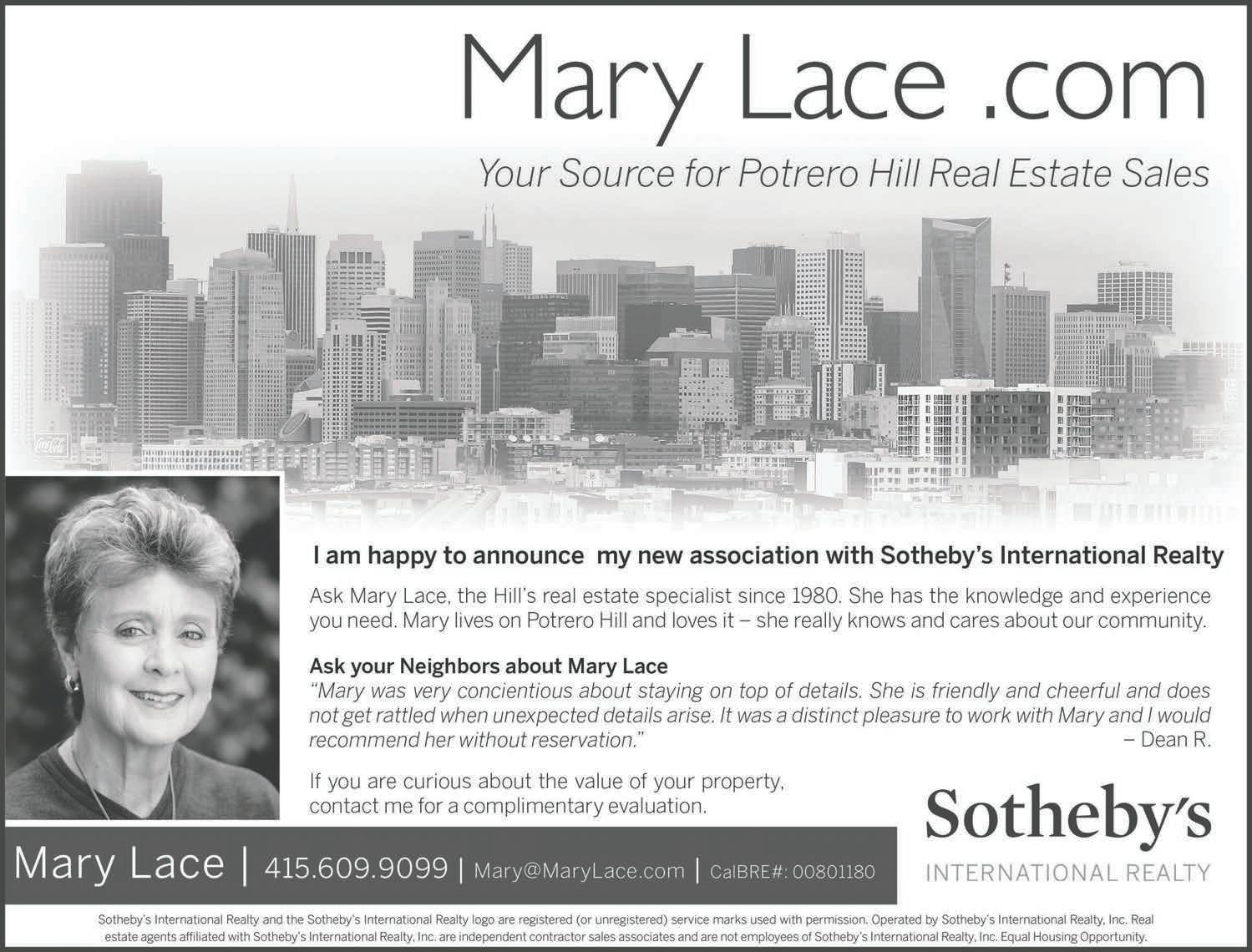
“Thank you, officer,” said Chester. “Grab a houseplant for the station on your way out.”
“That won’t be necessary,” said the cop. “We’d just kill it, triggered the need for a murder investigation.” He winced in recognition of his faux pas. “Sorry for your troubles; let us know if you determine anything has been stolen.”
As the constable exited he almost bumped into Maggie as she came in. “Ma’am,” he said, tipping his hat.
“Officer,” she nodded, attempting a clumsy curtsey, grimacing as she bent her knees. “Or would that be sheriff?” The cop smiled, and continued on his way.
“Oooff,” exhaled Chester, as he lowered himself on to the redwood bench.
“Thanks for doing that. Is it him?”
“Yeah,” said Maggie, joining him with an equal measure of weariness. “It’s Pete alright.” She paused, thinking of saying more, but decided against it.
The couple had been wakened early that morning by a pounding on their door. Chester answered it to find two cops, hats in hands, who told them that there’d been a burglary at his shop, and a “fatality, possibly one of your tenants, based on identification found on his person.” They’d asked Chester if he, or someone else, could come to the nursery to assess what’d been stolen, and to the morgue to identify the body.
“What’s going on,” asked Maggie, who’d joined Chester at the door, plac-
ing her hand on his shoulder.
“They want us to identify a body,” said Chester. “And apparently there’s been a break-in at the shop.”
“What?” Maggie looked at Chester, who had slumped towards the threshold, leaning against it to support himself. She turned towards the officers. “Excuse us a moment.” She ushered Chester a few steps away. “You go to the shop,” she said to him; I’ll identify the body. Who do they think it is?”
“They didn’t say,” said Chester. “One of our tenants. I have a feeling it might be Pete, though I don’t know why.”
“Alright,” she said, patting his arm. “You go ahead to the shop.”
“What happened,” ask Chester, looking down at his hands.
“They said it was a hit and run, at the 18th Street overpass. Apparently a car came off Mariposa Street too fast. Pete must have been walking across the bridge, and the car pushed him over.” She reached to hold his hand. “He looked pretty beat up.”
“I’m sorry you had to do that, Maggie,” he said. “It should have been me.” Maggie squeezed his hand. “Poor Pete.”
“Yeah,” sighed Chester. “What about the driver?”
“Weird thing,” said Maggie. “The car must’ve flown off the bridge, but it somehow landed right. All they could find was some shattered chunks of plastic and glass.”
The couple was silent for a few beats. “What happened here?” Maggie
scanned the shop. “It looks fine.”
“Someone broke into the basement,” said Chester. “The door was busted open, and it’s a mess in there. But, it’s always been a mess…and I haven’t really been down there…pretty much ever. They busted up some pots outside, and cut open the fence.” He got up. “I gotta call Jesus to patch things up.”
The door clattered open; a uniformed courier walked into the shop, holding an envelope. “Delivery!” he announced, crisply striding over to Chester. “Please sign here.”
“What is it,” asked Maggie, as the door swung shut behind the courier.
Chester had opened the envelope, pulled out the heavy cotton page inside, and was reading it. “It’s an offer. For the property.”
“An offer? From whom? How much?”
“It says it’s from Bud Beautiful, whatever that is. $20 million.”
“What?” exclaimed Maggie. “$20 million!”
“Yeah,” said Chester, sitting back down. “If this is real, I’m going to take it,” he grimaced.
Each month the View publishes a chapter from Gold , a serialized tale of politics, capitalism, and corruption in San Francisco. Previous chapters can be found on the paper’s website, www. potreroview.net. Advertisers or supporters interested in sponsoring future installations, or publishing the final manuscript, should contact editor@ potreroview.net.
SFMADE from page 9
think that is really cool because they don’t realize people in the City are making products that are really high quality,” she said.
Stanley and Gemmell took over Spicer Bags, located in the American Industrial Center, in 2013. The business, established in 2000, sold its products solely from a website or to other stores. In 2014, when AIC redeveloped its first floor for retail space, Spicer on Third store was created. “We’d been longing to open a retail direct consumer operation and get feedback from customers on products,” said Stanley.
Third Street has emerged as a popular spot for artisan-based businesses. Bryr Clogs, which makes its footwear in the back of its store, and Poco Dulce, which vends chocolate and confections, are also located at AIC.
“In my 30 years in San Francisco, I’ve seen a lot of attempts to keep industry in the City,” said Kathy Wiley, owner of Poco Dulce. “SFMade was probably the first to be really successful at that.” That the organization focuses on smaller producers, she said, could be key to its success.
A block north of AIC is Triple Voodoo, a bar that brews its own beer onsite. After a few years of what he called “gypsy brewing,” owner Greg Kitchen opened Triple Voodoo in 2014. One of his bartenders originally was an SFMade intern, dispatched to do public relations work. According to Kitchen, a strength of being a small brewer is the customer service he can provide to
SFMADE continues on page 18

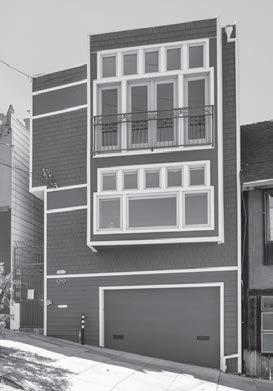


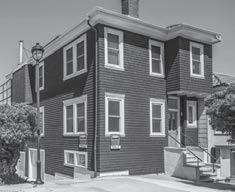
Gary & Lone Foss, 884-886 De Haro
today

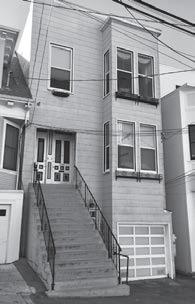


GBD
we have anticipated looking at long range planning,” Christenson said. As the amount of land set aside for open space hasn’t kept pace with new building, she’s hoping the GBD can tap into the anticipated millions of dollars expected from the University of California, San Francisco Medical Center for softening the impact of its expansion. “I want to make sure some of it goes to perks,” she said. “Some dessert, not all vegetables.”
from front page systems – 35 percent of which has been spent. Christenson is trying to coordinate with the City on larger improvements, such as installing crosswalks and pedestrian lighting along the southern segment of Minnesota Street; and Department of Public Works improvements to the entrance to Caltrains and Woods Yard, along 22nd Street. The latter is going out to bid in the next few months, with construction expected next year. “Public Works will be able to design the street so it will be nicer, with more street plantings, because the GBD will be able to maintain it,” she said.
As of February, the board had budgeted $193,300 for maintenance, about half of which has been spent on things like bush and tree pruning, plantings, cleaning sidewalks and graffiti removal. Herzog explained that GBD contracted janitorial and landscape services, which over six months removed 8,000 pounds of garbage.
Herzog, who is chief investment officer for AGI Avant, which developed 1201 Tennessee, is overseeing construction of the Tubbs Boardwalk in Dogpatch, which will feature 10,000 square feet of open space and a homage to the Tubbs Cordage Company, the first commercial rope manufacturer on the Pacific Coast. Herzog’s family roots extend 150 years, when his relatives pastured cattle on the Hill. “I’m passionate about the continuing renewal and beautification of San Francisco,” he said.
GBD allocated $189,400 for capital improvements – benches, lighting, playground equipment and irrigation



Goretsky, who lives on Pennsylvania at 22nd, has been involved in studies of the Caltrain station entrance, and spearheaded recent sidewalk garden additions on Pennsylvania. “I worked with the GBD in landscaping improvement in front of my property and thought that was a positive thing,” he said. He ran for the board because he felt that Dogpatch’s westernmost edge hasn’t been well represented by other neighborhood organizations.
Herzog and Goretsky fill two of nine property owner positions on the board, which also consists of two residential tenants, one commercial tenant and three green space advocates.
Jacobson, who lives at Tennessee Street at 18th, occupies one of the residential tenant seats. A dog advocate, she’s a member of the Dogpatch Neighborhood Association, Potrero Boosters and Friends of Jackson Park, and is on the citizen advisory committee for the upcoming renovation of the Potrero Recreation Center. Efficiency, transpar-
ency and accountability, she said, are the three main things she’ll advocate for on the GBD board. “I want more money going to serve the neighborhood in terms of fixing stuff rather than it does to administrative costs,” she said.
The other residential tenant seat is filled by Eppler, who lives “in an apartment with small rooms” on Utah Street near 17th. Parks and open space are something she and her two-year old son need for balance. “I want to take him places that are well maintained and thoughtfully designed,” she said. While elected for the first time, she’s been on the board since January after being appointed to fill a vacated slot.
Kraven fills the board’s sole commercial tenant seat. Although a Bayview resident, she worked at Esprit 20 years ago, and is presently vice president of operations at Triple Aught Design, which is located in the American Industrial Center. For a longtime she felt Dogpatch was neglected, an unused space on the Bay. She said she’s seen how green space can change a neighborhood. “Having a place where people can stop and pause and have some quiet time really makes a huge difference,” she said. “It’s what makes a livable city.”
Sullivan, re-elected as a property owner who lives on Tennessee Street near 22nd, worked on creating a children’s play area at Woods Yards and is an advocate for improving pedestrian access and safety.
Sawyer, re-elected as a green advocate, is the director of Tap the Sky, a program that’s constructed 20
rainwater harvesting systems at San Francisco schools.
Other board members include property owners Jean Bogiages, Robert Broucaret, Janet Carpinelli, Michele Davis, Susan Eslick and James Naylor. The two other green space advocates are Philip Pierce, of Friends of the Urban Forest, and Michael Yarne of Build Public. think they treated it like a neighborhood, and Potrero Hill, we still pride ourselves on being a neighborhood. They felt like, if they came in with the most money, they didn’t need to form relationships with the people who were already there.”
Wagly’s financial backing had come from the New York City private equity firm, Invus Group, with funding reportedly in the range of $20 to $50 million.
Another neighborhood business owner added that Wagly’s promise to house as many as 800 pets within its 16,000-square-foot Potrero Hill facility seemed “impossible or unsafe.”
The 1400 17th Street building is expected to be sold to a speculative buyer, with escrow set to close in June. Its future use is as yet unknown.































SFMADE from page 16
buyers. In fact, when reached by phone, Kitchen was delivering kegs to other bars and restaurants.
“We fill the kegs for delivery, so it is some of the freshest beer around,” he said, explaining that if he relied on a distributor, as larger companies need to, those barrels would sit in a warehouse for some time. Instead, the brew remains in its 10-barrel system in the brewery until its dispatched to a retail outlet.
A few blocks away, in a 20,000-square foot space on Minnesota and 23rd streets, San Francisco’s largest winery, Cellars 33, crushes grapes, selling the resulting wine primarily through its mailing list and to brokers who deliver to restaurants and shops. John Fones and his wife, Katie, are the sole employees although a handful of interns are deployed during harvest season. Outside of bottling, which the winery outsources, and grapes, which come from the Russian River Valley and Sonoma Coast, everything is done in-house.
“SFMade has been a huge help for us from the very beginning, from A to Z,” said Fones, citing the nonprofit’s assistance in finding the warehouse space, building Cellar 33’s brand, and providing networking opportunities. He’s currently working with SFMade to secure a tasting room.
In 2013, SFMade created PlaceMade, the City’s first nonprofit industrial real estate development company. PlaceMade is currently constructing what it calls the “Manufacturing
Foundry,” at 150 Hopper Street. The building will feature 50,000-square feet for manufacturing businesses when it’s completed next year.
Both nonprofits are run by the same staff out of two small Howard Street offices, inside TechShop, a membership-based do-it-yourself machine shop. The proximity creates networking opportunities for artisans looking for work or to start a business.
SFMade’s chief executive officer, Kate Sofis, has a master’s degree from the London School of Economics. Sofis grew up in Buffalo, New York; Lees is from Manchester, England. “They are both gritty industrial towns,” said Lees. “We both had families that worked in factories.”
According to Lees, more than 60 percent of the lower-wage jobs created by its member companies are filled by minorities. Women similarly represent 60 percent of the City’s manufacturing workforce, and 50 percent of its ownership.
Manufacturing workers are getting harder to find, as housing costs drive them out San Francisco, prompting SFMade to set its sights on a wider Bay Area plan. Already, many makers don’t operate solely in the City. They might have an office in San Francisco, an Oakland warehouse, and employees who commute throughout the region.
With assistance from the cities of San Jose, Fremont, Oakland and San Francisco, the nonprofit recently released a survey on the state of manufacturing in the region. Those municipalities collectively sustain 108,500 manufacturing jobs amongst


“ JCHS expanded my understanding of tikkun olam and public service. Service-oriented projects like Senior Keystone and class journeys offered great platforms for exploring the importance of giving back to the community and I carry these values with me. ”
3,200 companies.
“We’re beginning a conversation with what a real Bay Area manufacturing ecosystem looks like,” said Lees.
BOOKS from page 13
emphasizes art, design, and creativity. In 2000, Chronicle Books became independent from the San Francisco Chronicle
Other Chronicle Books publications that’ll appear in the exhibit include The Beatles Anthology (2000), a 400+-page volume, with 1,300 photographs, launched with a flash-mob Beatles sing-along in Union Square; Star Wars: From Concept to Screen to Collectible (1992), a collaboration with Lucasfilm Ltd., and Under the Tuscan Sun (1996). “At the time, Frances Mayes was publishing poetry at San Francisco State,” said Carabetta.
According to Carabetta, Chronicle Books’ The Journey is the Destination (2011), about the life of photojournalist and collage artist Dan Eldon, is being made into a movie. “He lived in Somalia during that time of “Black Hawk Down” and was caught in the crossfire. He took photographs of Mogadishu. He kept journals and made collages of the pictures he took. His work shows a love of Africa and the people there,” said Carabetta.
Chronicle Books’ children’s books on display will include Goodnight, Goodnight Construction Site (2011), which was on the New York Times Bestseller List for more 200 weeks;
Josephine (2013), a Coretta Scott King and Horn Book Honor Book; and They All Saw a Cat ” (2016), a Caldecott Honor Book. Carabetta said Chronicle Books’ children’s division is the brainchild of Victoria Rock, the company’s founding children’s book publisher and editor-at-large. Rock is known for supporting daring publications, such as The House That Crack Built (1992).
According to Carabetta, the exhibit took about two years to organize, and will be accompanied by release of Chronicle Books: The First 50 Years (2017), a hardcover visual history, which will be distributed at SFCB to those who donate $20 or more to the nonprofit.
Unlike the “Books of Course” exhibit, in which most pieces will be displayed under glass, “Chronicle Books” will show books on open shelves. Visitors will be able to pick up and read them. “At Chronicle, we have a reverence for the physicality of the book, the sensuous pleasures to be derived from the object itself,” said Nion McEvoy, Chairman of The McEvoy Group, which owns Chronicle Books.
“This exhibit has been a special project. Chronicle Books really has a “can-do” spirit. We went from being a small company where everyone did everything, typed our own memos and wrapped our own packages, to what we are today. Back then, I saw it as an exciting, invigorating, and less buttoned-down. I still do,” said Carabetta.


existing 7,500-square-foot space “is not only too small for the 600-plus tons of compostables that we move through that little building every day, but it is virtually rotting under the heavy acidity of the nature of the compostables. It is not able to adequately contain the moisture that is very prevalent in organic material, as well as odor, and actually can’t be completely enclosed, so there are a number of issues with that building.”
The proposed facility would be called the “West Wing,” a name owing to its initial conception as a Tunnel Avenue extension project. Construction delays on that effort served to reveal the need for an entirely new structure; specifically, a 14,546-square-foot composting center with a “large tip floor” and a “state-of-the-art odor management system.” Recology wants to start construction this summer, and open the West Wing in September, 2018, at a total cost of $18,857,170.
Also planned is a citywide bin swap for residents who subscribe to Recology’s “default service.” The most common single-family disposal arrangement currently consists of three 32-gallon bins. Recology believes that as residents produce less trash and recycle more the black bin can shrink from 32 to 16 gallons, and the blue bin will need to grow from 32 to 64 gallons. Arsenault attributes much of the steady volumetric rise in recycling in recent years to the prevalence of online shopping, which contributes “all that cardboard that seems to be in the stream.” Residents who prefer equal-sized bins can request to keep their existing configuration; others would be given new black and blue bins.
Both sets of customers would pay the same rates.
Apartment buildings, however, would see a change in the way their “diversion discount” is calculated.
The discount program was initiated in 2013 to reward dwellings containing six units or more for diverting waste from landfills by recycling and composting at a higher rate. Apartments had to maintain a “diversion rate” greater than 10 percent to qualify for a discount. Starting in July, more than 25 percent of a building’s waste would need to be recycled or composted for discount eligibility. The discount would be applied to Recology’s rates for apartments by determining the volumetric percentage of blue- and green-bin refuse within the building’s total output and then subtracting 25 percent – as opposed to 10 percent previously. A building that diverts 75 percent of its waste, therefore, would receive a discount of 50 percent instead of the 65 percent discount it gets under current rules.
The new system would, however, remove the discount “cap” that, under 2013 terms, stripped apartment buildings of a financial incentive to divert at a rate higher than 85 percent. Recology notes that apartment buildings constitute “one of the lowest-performing sectors for diversion.” The company hopes to ameliorate that with a new Apartment Diversion Program, intended to “increase tenant engagement” through social media campaigns, delivery of composting pails, and installation of “Waste Zero Ambassadors” at targeted buildings, who would be “responsible for motivating their neighbors to sort properly.”
“We are excited to continue working with the City towards our mutual goal of zero waste,” Arsenault
affirmed. In 2002, the City declared a bold ambition to achieve “zero waste” by 2020, meaning that, if all went well, San Francisco would send no trash to landfill or the incinerator by the start of the new millennium’s third decade. A 75 percent diversion rate was obtained in 2010, helping to establish San Francisco as one of the world’s greenest cities. According to the New York Times, the Pier 96 recycling center “achieved something approaching celebrity status, with numerous write-ups” and “visits from some 50 film crews.”
In recent years, however, the diversion rate has stalled at about 80 percent. At a March Director’s Hearing Arsenault admitted that “the technology of dealing with . . . those last few steps toward zero waste” has “not yet been solved.” In a 2014 FiveThirtyEight interview, San Francisco’s Zero Waste program manager Robert Haley acknowledged, “It would be hard for me with a straight face to say, ‘In six years, nothing is going to go to the landfill.’ But we want to get as close as we can to that.”
Today, San Francisco directs 1,100 tons of garbage to a Solano County landfill daily, much of it owing to the construction boom, which is responsible for sending 600 tons of building and demolition debris per day to Recology’s Integrated Materials Recovery Facility (iMRF), whose diversion rate is only 51 percent. Recology’s application includes “a contingent schedule for development of a new iMRF,” which, if pursued, would cost an estimated $63.4 million, with construction beginning in June, 2018, and finishing in December, 2019. The facility would add 600 tons a day of incoming capacity, with a projected diversion rate of 70 percent. The old iMRF facility, then, would – according to a second “contingent schedule” – be used to house a new “trash processing system” that’d “capture additional recoverable material” from the residential and commercial black-bin waste streams, 50 percent of which may, according to recent studies,


consist of refuse that should have been deposited into a blue or green bin.
Costs for the two contingent projects “are not included in the base rate application,” as their design and permitting processes have not yet been completed. Under the terms of the rate increase application, however, Recology would have the right to put the contingent rate schedules into effect upon the DPW director’s approval of final plans for the new iMRF and trash processing system, triggering additional rate hikes of 1.47 percent and 2.78 percent, respectively.
Recology emerged as the result of a 1932 Refuse Collection and Disposal Initiative Ordinance, which, in an effort to end turf wars among a multitude of independent trash collectors, divided San Francisco into 97 garbage collection districts, a permit – with no expiration date – for each district. Eventually, the company that’d become Recology acquired all 97 territorial permits, forming a monopoly. A 2012 ballot initiative to restore competitive bidding for municipal trash collection failed. Recology doesn’t hold a City contract in the traditional sense; since the City controls what it can charge residences, the residential refuse rate application process creates a measure of public accountability.
Commercial rates are likewise expected to rise in 2017; according to a friendly agreement, the City also participates in Recology’s commercial rate-setting process, but the 1932 ordinance doesn’t demand the same public disclosure and engagement that mark the residential application procedure.
During the public comment portion at a March Director’s Hearing, a concerned citizen opined that Recology’s public outreach to residents had been inadequate, observing that the rate increase proposal letter sent to San Francisco homes “looks like junk mail, and people are throwing it out, and they don’t know. There could be an email;
GARBAGE continues on page 21

there also could be other notices on our bills; there are many other avenues to let people know.”
Following the final public hearing, from 9 to 11 a.m. May 4, at City Hall, Room 416, the DPW director will send his findings to the City’s Refuse Rate Board, a panel consisting of the Public Utilities Commission general manager, City Controller, and City Administrator. After hearing any public objections to the director’s report, the Refuse Rate Board will render its final decision on Recology’s rate increase application before the end of June.
frame should be both/and rather than neither/nor. She admitted that District 10 is being singled out for increased development while many infill opportunities are being overlooked in the western neighborhoods and Marina due to single-family zoning and parking lot preservation.
high level of sustainability features is expected for all buildings within each project.
voters believe transportation issues need to be prioritized immediately, including by increasing taxes.
“Losing our youth is a very bad economic and social strategy,” said Jim Wunderman, Council president and chief executive officer. “But until we get serious about building the housing we need we’re going to continue seeing our region drained of the young and diverse talent that has helped make the Bay Area an economic powerhouse. We know what the solutions are – streamline local approval and reduce fees and regulatory costs – we just need the political will here and in Sacramento to make them happen. It can be done, it must be done and we’re working now to get it done.”
Affordable housing shortages and chaotic traffic conditions are a reinforcing phenomenon. According to Matt Regan, Council senior vice president of public policy, roughly 170,000 people drive into the Bay Area daily to fill middle-income and service sectors positions. Many of these jobs are located in San Francisco and Silicon Valley. Due to lack of housing, these workers often have to live further inland, where rents are one-third Bay Area prices.
Of the 20,000 residences slated to be built Southside, 6,700 are supposed to be affordable rental apartments or for-sale condominiums. For example, 30 percent of Forest City’s planned 2,150 units will be affordable to either low or middle-income households, as defined by the County’s area median income.
Last year, District 10 Supervisor Malia Cohen authored “neighborhood preference” legislation, which ultimately passed, that sets aside 40 percent of the affordable units being built for existing District residents.
“The cumulative impact of chronically under-building housing for over 30 years is that we have skyrocketing rents,” said Laura Foote Clark, executive director YIMBY Action. “The cumulative impacts of under-building effect everyone, everywhere. In terms of the influx of newcomers, when someone doesn’t have a place to live, there’s still a local job for them to fill, so they end up bidding up the cost of housing. The demand for housing doesn’t go away.”
Foote Clark views housing versus transit and infrastructure as a “chicken and egg debate,” and said the policy
According to Erica Kato, San Francisco Municipal Transportation Authority deputy spokesperson, extensive transit investments are underway in Potrero Hill and Dogpatch, which will benefit current and future residents as the area grows. Within the last two years SFMTA has increased the frequency and extended the hours of the 10-Townsend, and augmented the frequency of the 22-Fillmore. It added Route 55-16th Street, connecting the Mission, Potrero Hill and Mission Bay, and Route 48-Owl Service, which offers 24-hour connections from Third Street through Potrero Hill to the Mission and Noe Valley.
SFMTA has plans for several capital changes over the next few years. Opening of the Central Subway will increase transit frequency along Third Street and provide direct connections to the Financial District and Chinatown. The 16th Street Improvement Project will enhance pedestrian safety and bolster transit reliability. Potrero Avenue Streetscape Improvements will widen sidewalks, add bicycle lanes and create a dedicated southbound transit lane. SFMTA will hold community meetings this summer and fall to gather stakeholder feedback about these projects.
Dogpatch resident Topher Delaney, artist at Delaney + Chin, is concerned about a lack of coordination between the Southside mega-projects, arguing that they’re being planned as single villages, with no integration between them. She also wants greater focus on providing amenities for families, not just 20-something professionals.
“Restaurants are really nice, but the ones coming in are all expensive, which is hard for families,” Delaney remarked. “It’s becoming a very campus-like feel. There are a lot of bars coming in; there’s a bid out to put a Crane Cove Brew Pub right next to a park for children. It seems that every block is going to have a bar, which will complement the Warriors Stadium but does it address the needs of families?”
According to Adam Van De Water, project manager at the Office of Economic and Workforce Development, the City is aware of the need to coordinate development activity. OEWD is collaborating with the Planning Department, Port, SFMTA, Office of Community Investment and Infrastructure, and Department of Recreation and Parks to create the Southern Bayfront Strategy, an interlocking set of development agreements associated with individual projects. The Strategy is an attempt to maximize contributions to affordable housing, transportation, sea level rise mitigation, open space, economic and workforce development, and community facilities.
For example, open space provided by each project will be managed centrally to create a unified Blue Greenway waterfront recreation district. The City is negotiating with developers on transportation impact fees and mitigations in an attempt to minimize cumulative impacts on roads and transit routes. A
“As part of the Southern Bayfront effort the City is analyzing community services and public safety needs to understand residents’ access to necessary services. This will allow the City to make recommendations for improvements now and as populations increase,” stated City literature.
“This coordination and approach will define the southern waterfront for generations to come. It will ensure that investment promotes equity for existing residents and preserves the diversity of our communities,” said District 10 Supervisor Malia Cohen. “These projects are proposing investments in our communities that can provide substantial resources for residents in terms of affordable housing, improved transportation options, waterfront access, environmental sustainability and affordable housing.”
A Forest City representative indicated that no meetings have been held among the major Southside developers, pointing to the City as being responsible for convening such gatherings.
Last year, a draft environmental impact report on Forest City’s mixeduse project at Pier 70 determined that potential environmental impacts could be mitigated “to a less than significant level.” Among other findings, the draft EIR found that the project would cause the 48 Quintara/24th Street Muni route to exceed 85 percent capacity during peak hours. To address that issue, Forest City will pay for additional buses, or SFMTA will switch to higher capacity buses or add a new service route.
The final EIR for Pier 70 is still being drafted. The project will go before the Port, Planning Commission and Board of Supervisors this year; negotiations will likely occur refining specific strategies to address transit impacts. The draft EIR for the Mission Rock project hasn’t been released.
“My understanding is that the EIRs don’t adequately address the cumulative impacts, and the developers end up getting off the hook indirectly,” said Katherine Doumani, Dogpatch Neighborhood Association member. “All together there needs to be some mitigation efforts taken on the City’s side. I have always wondered why you up-zoned an entire neighborhood without planning ahead and setting aside space to offer public services, transit and open space, as well as making sure there will be adequate healthcare services, childcare, and community resources.”
Doumani understands that the Southern Bayfront Strategy is supposed to address concerns about cumulative impacts, but thinks that the initiative was started far too late in the planning process, and that communication with residents has been lacking.
“I don’t understand how all these people will be able to come and go,” added Delaney. “I don’t think there’s an understanding as to how this will all be addressed. They’ve opened up lanes, but at a certain point you can’t address 18,000 people leaving all at once. You can’t just put in buildings with no connections. It’s getting to the point of being like New York City.”
“The solution is not to shut off development,” said Foote Clark. “Right
now we’re just starting to keep pace with building enough housing. It definitely needs to be happening in more neighborhoods.”
the night gossiping and stuffing kimchi down each other’s pajama bottoms.
So, before casting aspersions on the integrity of our president, do your homework. Start by checking out my critically acclaimed pamphlet, Not That Terrible: Taking the “Dick” Out of Dictators.
Ralph A. Farmington
Associate professor of Alternative History, DeVos Charter University Ypsilanti, MI
Editor,
Regrading “Trump Not Legit President,” (op-ed, February 14), I was sickened by your so-called opinion writer’s lack of respect for the man who clearly would’ve won the popular vote if it wasn’t for the Clinton campaign’s dirty tricks. They contacted millions of dead Democrats via séances, bussed their spirits from polling place to polling place and hired space aliens to abduct Republicans and reprogram their brains so they’d not cast their ballot for Trump but instead write-in Bobby Flay.
Rita Fleckman
Author, Get Rid of Obamacare, Keep the Affordable Care Act Bartlesville, OK
Editor, Regarding “Trump Marches to His Own Drummer—Seemingly Backward” (front page, February 14), to hear this totally misinformed journalist tell it, no other U.S. president has ever banned Muslims from entering the country, insulted an Australian prime minister or placed a white nationalist on the National Security Council. As for Trump’s threat to send American troops into Mexico to get rid of the bad hombres, okay, that was a little loco Even though those bad hombres have got to go! But cut the man some slack.
Have you never required a learning curve after starting a new job? I have. When I was hired as chief executive officer of the startup Crappify, a cuttingedge bowel movement app, it took me several months—and $14 billion—to find my groove. It took me several more months to find the $14 billion. Bottom line: To err is human, to forgive divine. Bad hombres not included.
Guy Twomey
Former CEO, Crappify; CEO, Bad Hombrefy, an app that tracks down bad hombres Ames, IA
Fred Raker is a Westwood Park resident. See more of his comic bits at fredraker.com.
855 Brannan Street, San Francisco, CA 94103
11 Studio, 21 One Bedroom, 22 Two Bedroom and 1 Three Bedroom “Below Market Rate” rental units available at 855 Brannan, from $1,036 to $1,481 a month; 44 parking spaces are available for an additional $100 per month and will be offered to households in lottery rank order. Income restrictions apply; households must be at or below 55% of Area Median Income: 1 person - $41,450; 2 persons - $47,400; 3 persons - $53,300; 4 persons - $59,250; 5 persons - $63,950. Please visit https://housing.sfgov.org for larger households.
Applications will be accepted starting April 19, 2017 and must be received by 5pm on May 17, 2017. Postmarks will not be considered. Apply online through DAHLIA, the San Francisco Housing Portal at https://housing.sfgov.org or mail in a paper application with a self-addressed stamped envelope to Brannan BMR P.O. Box 420847, San Francisco, CA 94142. Paper applications can be downloaded from https://housing.sfgov.org or picked up from one of the housing counseling agencies listed at https://housing.sfgov.org/housing-counselors.com. Please contact the 855 Brannan leasing team for more information at 844.434.5024 or 855BrannanBMR@eqr.com.
Units available through the San Francisco Mayor’s Office of Housing and Community Development and are subject to monitoring and other restrictions. Visit www.sfmohcd.org for program information.
James Seward Hoppe
August 21, 1955 to April 4, 2017
James Seward “Da Hop” Hoppe died on April 4, 2017 in Thailand at the age of 61. A Missouri Street resident for many years, Hoppe had a friendly, outgoing, nature and loved entertaining others with his storytelling. He spoke several languages.
Hoppe divided his time between San Francisco and Thailand until 2005, when he relocated to the Sangkhla Buri District in the Kanchanaburi Province of western Thailand, where he opened Birdland Books, adjacent to a Buddhist temple. Hoppe’s shop featured a restaurant that served Thai, American and Burmese cuisine, more than 1,000
books for sale or trade, and lodging.
Hoppe was born in Patterson, New Jersey on August 21,1955, and resided on Long Island until 1972, when he joined the United States Air Force. During his military service he was stationed in Thailand, kindling an affinity for the country that set the stage for his later emigration. A disabled veteran, he received an honorable military discharge from the Air Force after serving for four years.
Hoppe’s funeral was held at Wat Suan See in Thailand. A memorial service took place at the Bay View Boat Club on April 13. He’s survived by a sister, Wendy, and many friends from around the globe.
Gardener
LOOKING FOR A GARDENER? We are a small full-service landscape and garden company specializing in residential design, construction, maintenance and consulting. http://www.shapeoftheearth.com Call David @ 415.846.7581
Office Space For Rent
FURNISHED OFFICE SPACE with hardwood floors and natural light. Across from Jackson Playground. 185 sq.ft. $800 or $400/desk, incl. wifi, limited use of conference rm. Available now! admin@ paulterry.com
City and County of San Francisco Outreach Advertising
April/May 2017
Photography Consultant
Experienced photo technician, specializing in in-home/studio archiving and file management. Call 826.266.7587, for Sam.
Apartment For Rent
$2100 - 2 RM POTRERO Hill STUDIO in 3 unit bldg. Pvt entrance, separate kitchen w/space for sm. office, lg. closet, yard. Water, garbage inc. Washer/dryer. 1 yr lease. No pets. Avail. now. (415)297-9149
Housekeeping
CLEANING PROFESSIONAL 28 years experience. Apartments, homes or offices and apartment buildings. Roger Miller 415-794-4411 References upon request.
The Assessment Appeals Board resolves legal and value assessment issues between the Assessor’s office and property owners. We have three vacancies on Board 1, which oversees all downtown properties – high rise residential, office, commercial, hotels. Board 1 also oversees all properties over $50 million in assessed value throughout the City.
Assessment appeal hearings are quasi-judicial, conducted in a manner similar to a court setting, with evidence and testimony presented by the parties. The Board then evaluates the evidence and testimony, and renders its decision.
To be eligible for seat appointment, you must have minimum of five years professional experience in California as either a: (1) public accountant; (2) real estate broker; (3) attorney; or (4) property appraiser accredited by a nationally recognized organization, or certified by either the Office of Real Estate Appraiser or the State Board of Equalization.
For more information regarding the Assessment Appeals Board call (415) 554-6778.
The City & County of San Francisco, Office of the Clerk of the Board of Supervisors (Department) has commenced the following Request for Proposals (RFP) process:
Legislative Management System (LMS)
The department seeks a comprehensive Legislative Management System to integrate seamlessly with existing legislative processes and data, and answer day-to-day operational needs and mission critical business processes – including, but not limited to agenda management, legislative drafting/submission, and document management. The solution must be sufficiently flexible in functional and technical design to accommodate future technological changes and re-engineering.
The proposed not-to-exceed budget for implementation is $390,000, with an annual not-to-exceed maintenance cost of $30,000. The proposed term is five (5) years, with option to extend up to five (5) additional years. Actual contract term may vary.
Qualified firms with successful experience providing Legislative Management solutions are strongly encouraged to apply.
Interested parties may download the RPF and attachments by visiting: www.sfbos.org/contracting-opportunities.
Board of Supervisors Regularly Scheduled Board Meetings June and July Meetings
Come and see your local government at work, the Board of Supervisors hold weekly meetings most Tuesdays at 2:00 p.m. in Rm. 250 of San Francisco City Hall.
Requests must be received 48 hours in advance required for interpretation. For more information see the Board of Supervisor’s website www.sfbos.org, or call 415-554-5184.
The City and County of San Francisco encourage public outreach. Articles are translated into several languages to provide better public access. The newspaper makes every effort to translate the articles of general interest correctly. No liability is assumed by the City and County of San Francisco or the newspapers for errors and omissions.
For 47 years, The Potrero View has offered news about important neighborhood goings-on, including what’s happening in our schools, with local merchants, families, parks, and cherished personalities. We’ve even occasionally broken larger stories, about the closure of the Hunters Point and Potrero power plants, new parking regulations, and land use changes. We’re still here, even while the San Francisco Bay Guardian and other publications aren’t, and the San Francisco Examiner is no longer a daily.
The View will only survive into the future with your help Which is why we’re asking you to donate generously to the paper. Please take this opportunity to show your appreciation for community news by doing one or more of the following:
SUBSCRIBE! For $48 you’ll receive the paper every month in your mail box. How exciting!
DONATE $68, and receive a copy of The Daddy Handbook, by View publisher Steven J. Moss, a perfect gift for fathers and would-be dads!
DONATE $88, and receive a “life and death bundle,” The Daddy Handbook, a celebration of fatherhood, and Last Things: A Graphic Memoir of ALS, a gripping and deeply personal account of how Marissa Moss grappled with the death of her beloved husband.
DONATE $100, and receive all of the above plus our deep gratitude!

YES! I love the View, and would be delighted to help support it with my gift of: $48 $68 $88 $100 Some other affordable amount $
Please send: my subscription The Daddy Handbook Last Things Your Love to:
FULL NAME
ADDRESS
CITY STATE ZIP CODE
EMAIL ADDRESS
Enclosed is my check. (Please send, along with this form, to: The Potrero View, 1459 18th Street, Number 214, San Francisco, California 94107)
I am sending my gift via PayPal (office@potreroview.net).











